Writing a LinkedIn cover letter
LinkedIn is a popular professional social network that allows employers to post open positions and receive applications. In some cases, these applications require a cover letter submitted directly through the platform. While a LinkedIn cover letter is similar to a standard one, being on the platform allows you to leverage certain personalization features to impress recruiters and give you the best chance of landing the job you want.

How to make a cover letter on LinkedIn
When it comes to cover letter examples , LinkedIn doesn’t supply any. The platform has its own set of rules and expectations, and it's important that you follow them. Here are a few things you need to know about navigating the process and making sure your professionalism shines through.
Search for a job post
LinkedIn makes it easy for job hunters to search for roles they’d like to apply for. From your profile page, simply click on the “Jobs” icon at the top of the page. On the “Jobs” page, you’ll be able to see the top opportunities LinkedIn recommends based on the qualifications listed in your profile.
The site will also provide a plethora of other suggestions, including keywords to search, companies hiring for your skills, and jobs where you’re likely to be a top applicant.
Apply through the “Apply” or “Easy Apply” functions
When you choose a particular role, LinkedIn will show you a detailed job description, as well as the posting date, number of applicants, and current employees you may know. There will also be an option to either apply for the position or save the posting to come back to it later.
To apply for the position, click the “Apply” button. In some cases, this button will take you to the employer’s website to submit an application through their online system. If there’s an “Easy Apply” button, clicking it will usually take you to an on-platform application.
There, you’ll be asked to upload your resume as a file attachment, fill in your personal details, and possibly answer a few questions. There may also be a message box where you can type your cover letter.
Personalize your cover letter
Applying on LinkedIn provides added benefits for applicants. In many cases, you’ll have the unique ability to see who posted the job and what their role is. There’s often a button next to this feature that allows you to message that person to ask questions about the posting.
The bottom of the job description also usually includes a link to the company page. From there, you can sometimes see the profiles of employees in key roles.
You can also click the “People” tab on an employer’s LinkedIn page to search for the name of a hiring manager. This will help you personalize the cover letter templates you use so you can address them to the right person instead of simply including a generic greeting.
Highlight relevant skills and experience
Another benefit of using LinkedIn to apply is that employers can see the relevant skills and experience listed in your profile. Consequently, they’ll be able to cross-reference the skills you include in your cover letter and resume.
Though many resume articles may tell you that this information is sufficient for your letter, keep in mind that LinkedIn doesn’t always provide adequate space to discuss your skills in context. Your profile won’t be able to align those skills with the employer’s posted job description.
For that reason, it’s important to connect the dots for the employer in your LinkedIn cover letter, explaining how your background, skills, and experience have set you up for success and make you the best candidate for the position.
This tactic is crucial for differentiating yourself from other applicants on LinkedIn and is especially important for roles where the platform indicates that there are already many applicants.
Include a call to action
This is one way writing a LinkedIn cover letter aligns with the conventional wisdom found in many cover letter articles .
Make sure to end your cover letter with a clear prompt for the person reading it to take the next step in the hiring process. Reiterate your enthusiasm and invite them to view any materials or portfolios you’ve included on your profile or application.
Tell the hiring manager you’d love to set up an interview or a time to talk further about how you can help the company reach its goals. Let them know you’re available to chat through LinkedIn and provide another contact method in case they prefer an alternative venue.
Proofread and edit
LinkedIn makes writing a cover letter quite easy. That said, it’s important to remember that while social media platforms can seem casual, that doesn’t mean you should take your cover letter and application any less seriously.
To appear as professional as possible, make it a point to proofread and edit your LinkedIn cover letter and resume to confirm that they’re error-free. If you’ve used a cover letter or resume template , alter parts of it to reflect your unique skills and background.
Send your application
Once everything is complete, submit your job application on LinkedIn by clicking the appropriate button. You also have the option to save your application so you can finish and submit it later.
Remember that employers can’t see your application until it’s submitted. If you forget to take this step, you won’t be in the running for the position you’re interested in.
Expert Tip:
Consider using a typing assistant or online proofreading tool to help you edit your cover letter before you send it. That way, you can spot errors and make changes inside the LinkedIn message box as you type, so you won’t have to worry about coming across as unprofessional.
To-do’s after sending your application
You may wonder what happens next once your application package is in the employer’s hands. Unlike the company’s applicant tracking system (ATS) , which may or may not give updates about your application, you can track your applications on LinkedIn.
Simply navigate to the “Jobs” tab on your profile, click “My Jobs” on the left-hand side, and choose “Applications” to see the jobs you’ve applied for. You can also adjust your notification settings to receive job application updates via email or the LinkedIn app, including recruiter views or resume downloads.
If you want to continue your job hunt and submit another resume and cover letter , LinkedIn makes it easy. If requested or given room to do so, including a LinkedIn cover letter in each of those applications can go a long way toward helping you stand out amongst a sea of applicants.
Finally, if you haven’t heard back from the company within one to two weeks, consider sending a follow-up message via LinkedIn.
Remind the hiring manager or recruiter of your qualifications, highlight why you’re a great fit for the role, and let them know you’re enthusiastic about the possibility of an interview to discuss how you can be of value to the company.
“While social media platforms can seem casual, that doesn’t mean you should take your cover letter and application any less seriously.”
Use LinkedIn to your advantage in your search for the perfect role
As easy as it is to apply for a job on LinkedIn, it’s still important to ensure that your cover letter and application come across as poised and professional.
Before applying, familiarize yourself with the platform functions and use them to research the recruiter or hiring manager’s name. When you write your cover letter, personalize your greeting using that name instead of going with something more generic.
Additionally, give context to the experience and skills you’ve listed and explain why you’re a good fit for the role, using your LinkedIn profile as a resume example of sorts. Include a call to action at the end, and don’t forget to proofread your letter before sending it off.
If you’re coming up blank trying to compose your letter, consider using a LinkedIn cover letter example as your guide.
Reviewing cover letter and resume examples can help you determine the appropriate structure and maintain a professional tone throughout. With the right resources, you can draft a standout cover letter that gets your application moved to the top of the digital stack.
Get ahead of the competition
Make your job applications stand-out from other candidates.

Who to address cover letter to if unknown

For a Cover Letter, Google Docs Is a Good Choice

Writing a Cover Letter for Internal Positions
How to Write a Cover Letter [Full Guide & Examples for 2024]

After weeks of heavy job searching, you’re almost there!
You’ve perfected your resume.
You’ve short-listed the coolest jobs you want to apply for.
You’ve even had a friend train you for every single interview question out there.
But then, before you can send in your application and call it a day, you remember that you need to write a cover letter too.
So now, you’re stuck staring at a blank page, wondering where to start...
Don’t panic! We’ve got you covered. Writing a cover letter is a lot simpler than you might think.
In this guide, we’re going to teach you how to write a cover letter that gets you the job you deserve.
We're going to cover:
What Is a Cover Letter?
- How to Write the Perfect Cover Letter, Step by Step
- 15+ Job-Winning Cover Letter Examples
Let’s get started.
A cover letter is a document that you submit as part of your job application, alongside your resume or CV.
The purpose of a cover letter is to introduce you and briefly summarize your professional background. On average, it should be around 250 to 400 words long .
A good cover letter is supposed to impress the hiring manager and convince them you’re worth interviewing as a candidate.
So, how can your cover letter achieve this?
First of all, it should complement your resume, not copy it. Your cover letter is your chance to elaborate on important achievements, skills, or anything else that your resume doesn’t give you the space to cover.
For example, if you have an employment gap on your resume, the cover letter is a great place to explain why it happened and how it helped you grow as a person.
If this is your first time writing a cover letter, writing about yourself might seem complicated. But don’t worry—you don’t need to be super creative or even a good writer .
All you have to do is follow this tried and tested cover letter structure:

- Header. Add all the necessary contact information at the top of your cover letter.
- Formal greeting. Choose an appropriate way to greet your target audience.
- Introduction. Introduce yourself in the opening paragraph and explain your interest in the role.
- Body. Elaborate on why you’re the best candidate for the job and a good match for the company. Focus on “selling” your skills, achievements, and relevant professional experiences.
- Conclusion. Summarize your key points and wrap it up professionally.
Now, let’s take a look at an example of a cover letter that follows our structure perfectly:

New to cover letter writing? Give our cover letter video a watch before diving into the article!
When Should You Write a Cover Letter?
You should always include a cover letter in your job application, even if the hiring manager never reads it. Submitting a cover letter is as important as submitting a resume if you want to look like a serious candidate.
If the employer requests a cover letter as part of the screening process, not sending one is a huge red flag and will probably get your application tossed into the “no” pile immediately.
On the other hand, if the job advertisement doesn’t require a cover letter from the candidates, adding one shows you went the extra mile.
Putting in the effort to write a cover letter can set you apart from other candidates with similar professional experience and skills, and it could even sway the hiring manager to call you for an interview if you do it right.
Need to write a letter to help get you into a good school or volunteer program? Check out our guide to learn how to write a motivation letter !
How to Write the Perfect Cover Letter
Now that you know what a cover letter is, it’s time to learn how to write one!
We’ll go through the process in detail, step by step.
#1. Choose the Right Cover Letter Template
A good cover letter is all about leaving the right first impression.
So, what’s a better way to leave a good impression than a well-formatted, stylish template?

Just choose one of our hand-picked cover letter templates , and you’ll be all set in no time!
As a bonus, our intuitive AI will even give you suggestions on how to improve your cover letter as you write it. You’ll have the perfect cover letter done in minutes!

#2. Put Contact Information in the Header
As with a resume, it’s important to
start your cover letter
with your contact details at the top. These should be in your cover letter’s header, separated neatly from the bulk of your text.

Here, you want to include all the essential contact information , including:
- Full Name. Your first and last name should stand out at the top.
- Job Title. Match the professional title underneath your name to the exact job title of the position you’re applying for. Hiring managers often hire for several roles at once, so giving them this cue about what role you’re after helps things go smoother.
- Email Address. Always use a professional and easy-to-spell email address. Ideally, it should combine your first and last names.
- Phone Number. Add a number where the hiring manager can easily reach you.
- Location. Add your city and state/country, no need for more details.
- Relevant Links (optional). You can add links to websites or social media profiles that are relevant to your field. Examples include a LinkedIn profile , Github, or an online portfolio.
Then it’s time to add the recipient’s contact details, such as:
- Hiring Manager's Name. If you can find the name of the hiring manager, add it.
- Hiring Manager's Title. While there’s no harm in writing “hiring manager,” if they’re the head of the department, we recommend you use that title accordingly.
- Company Name. Make sure to write the name of the company you're applying to.
- Location. The city and state/country are usually enough information here, too.
- Date of Writing (Optional). You can include the date you wrote your cover letter for an extra professional touch.

#3. Address the Hiring Manager
Once you’ve properly listed all the contact information, it’s time to start writing the content of the cover letter.
The first thing you need to do here is to address your cover letter directly to the hiring manager.
In fact, you want to address the hiring manager personally .
Forget the old “Dear Sir or Madam” or the impersonal “To Whom It May Concern.” You want to give your future boss a good impression and show them that you did your research before sending in your application.
No one wants to hire a job seeker who just spams 20+ companies and hopes something sticks with their generic approach
So, how do you find out who’s the hiring manager?
First, check the job ad. The hiring manager’s name might be listed somewhere in it.
If that doesn’t work, check the company’s LinkedIn page. You just need to look up the head of the relevant department you’re applying to, and you’re all set.
For example, if you’re applying for the position of Communication Specialist at Novorésumé. The hiring manager is probably the Head of Communications or the Chief Communications Officer.
Here’s what you should look for on LinkedIn:

And there you go! You have your hiring manager.
But let’s say you’re applying for a position as a server . In that case, you’d be looking for the “restaurant manager” or “food and beverage manager.”
If the results don’t come up with anything, try checking out the “Team” page on the company website; there’s a good chance you’ll at least find the right person there.
Make sure to address them as Mr. or Ms., followed by their last name. If you’re not sure about their gender or marital status, you can just stick to their full name, like so:
- Dear Mr. Kurtuy,
- Dear Andrei Kurtuy,
But what if you still can’t find the hiring manager’s name, no matter where you look?
No worries. You can direct your cover letter to the company, department, or team as a whole, or just skip the hiring manager’s name.
- Dear [Department] Hiring Manager
- Dear Hiring Manager
- Dear [Department] Team
- Dear [Company Name]
Are you applying for a research position? Learn how to write an academic personal statement .
#4. Write an Eye-Catching Introduction
First impressions matter, especially when it comes to your job search.
Hiring managers get hundreds, sometimes even thousands, of applications. Chances are, they’re not going to be reading every single cover letter end-to-end.
So, it’s essential to catch their attention from the very first paragraph.
The biggest problem with most opening paragraphs is that they’re usually extremely generic. Here’s an example:
- My name is Jonathan, and I’d like to work as a Sales Manager at XYZ Inc. I’ve worked as a Sales Manager at MadeUpCompany Inc. for 5+ years, so I believe that I’d be a good fit for the position.
See the issue here? This opening paragraph doesn’t say anything except the fact that you’ve worked the job before.
And do you know who else has similar work experience? All the other applicants you’re competing with.
Instead, you want to start with some of your top achievements to grab the reader’s attention. And to get the point across, the achievements should be as relevant as possible to the position.
Your opening paragraph should also show the hiring manager a bit about why you want this specific job. For example, mention how the job relates to your plans for the future or how it can help you grow professionally. This will show the hiring manager that you’re not just applying left and right—you’re actually enthusiastic about getting this particular role.
Now, let’s make our previous example shine:
Dear Mr. Smith,
My name’s Michael, and I’d like to help XYZ Inc. hit and exceed its sales goals as a Sales Manager. I’ve worked as a Sales Representative with Company X, another fin-tech company , for 3+ years, where I generated an average of $30,000+ in sales per month and beat the KPIs by around 40%. I believe that my previous industry experience, passion for finance , and excellence in sales make me the right candidate for the job.
The second candidate starts with what they can do for the company in the future and immediately lists an impressive and relevant achievement. Since they’re experienced in the same industry and interested in finance, the hiring manager can see they’re not just a random applicant.
From this introduction, it’s safe to say that the hiring manager would read the rest of this candidate’s cover letter.
#5. Use the Cover Letter Body for Details
The next part of your cover letter is where you can go into detail about what sets you apart as a qualified candidate for the job.
The main thing you need to remember here is that you shouldn’t make it all about yourself . Your cover letter is supposed to show the hiring manager how you relate to the job and the company you’re applying to.
No matter how cool you make yourself sound in your cover letter, if you don’t tailor it to match what the hiring manager is looking for, you’re not getting an interview.
To get this right, use the job ad as a reference when writing your cover letter. Make sure to highlight skills and achievements that match the job requirements, and you’re good to go.
Since this part of your cover letter is by far the longest, you should split it into at least two paragraphs.
Here’s what each paragraph should cover:
Explain Why You’re the Perfect Candidate for the Role
Before you can show the hiring manager that you’re exactly what they’ve been looking for, you need to know what it is they’re looking for.
Start by doing a bit of research. Learn what the most important skills and responsibilities of the role are according to the job ad, and focus on any relevant experience you have that matches them.
For example, if you’re applying for the position of a Facebook Advertiser. The top requirements on the job ad are:
- Experience managing a Facebook ad budget of $10,000+ / month
- Some skills in advertising on other platforms (Google Search + Twitter)
- Excellent copywriting skills
So, in the body of your cover letter, you need to show how you meet these requirements. Here’s an example of what that can look like:
In my previous role as a Facebook Marketing Expert at XYZ Inc. I handled customer acquisition through ads, managing a monthly Facebook ad budget of $40,000+ . As the sole digital marketer at the company, I managed the ad creation and management process end-to-end. I created the ad copy and images, picked the targeting, ran optimization trials, and so on.
Other than Facebook advertising, I’ve also delved into other online PPC channels, including:
- Google Search
Our example addresses all the necessary requirements and shows off the candidate’s relevant skills.
Are you a student applying for your first internship? Learn how to write an internship cover letter with our dedicated guide.
Explain Why You’re a Good Fit for the Company
As skilled and experienced as you may be, that’s not all the hiring manager is looking for.
They also want someone who’s a good fit for their company and who actually wants to work there.
Employees who don’t fit in with the company culture are likely to quit sooner or later. This ends up costing the company a ton of money, up to 50% of the employee’s annual salary , so hiring managers vet candidates very carefully to avoid this scenario.
So, you have to convince the hiring manager that you’re passionate about working with them.
Start by doing some research about the company. You want to know things like:
- What’s the company’s business model?
- What’s the company’s product or service? Have you used it?
- What’s the company’s culture like?
Chances are, you’ll find all the information you need either on the company website or on job-search websites like Jobscan or Glassdoor.
Then, pick your favorite thing about the company and talk about it in your cover letter.
But don’t just describe the company in its own words just to flatter them. Be super specific—the hiring manager can see through any fluff.
For example, if you’re passionate about their product and you like the company’s culture of innovation and independent work model, you can write something like:
I’ve personally used the XYZ Smartphone, and I believe that it’s the most innovative tech I’ve used in years. The features, such as Made-Up-Feature #1 and Made-Up-Feature #2, were real game changers for the device.
I really admire how Company XYZ strives for excellence in all its product lines, creating market-leading tech. As someone who thrives in a self-driven environment, I truly believe that I’ll be a great match for your Product Design team.
So, make sure to do your fair share of research and come up with good reasons why you're applying to that specific company.
Is the company you want to work for not hiring at the moment? Check out our guide to writing a letter of interest .
#6. Wrap It Up and Sign It
Finally, it’s time to conclude your cover letter.
In the final paragraph, you want to:
- Wrap up any points you couldn't make in the previous paragraphs. Do you have anything left to say? If there’s any other information that could help the hiring manager make their decision, mention it here. If not, just recap your key selling points so far, such as key skills and expertise.
- Express gratitude. Politely thanking the hiring manager for their time is always a good idea.
- Finish the cover letter with a call to action. The very last sentence in your cover letter should be a call to action. This means you should ask the hiring manager to do something, like call you and discuss your application or arrange an interview.
- Remember to sign your cover letter. Just add a formal closing line and sign your name at the bottom.
Here’s an example of how to end your cover letter :
I hope to help Company X make the most of their Facebook marketing initiatives. I'd love to further discuss how my previous success at XYZ Inc. can help you achieve your Facebook marketing goals. Please don’t hesitate to reach out to me at the provided email address or phone number so that we may arrange an interview.
Thank you for your consideration,
Alice Richards
Feel free to use one of these other popular closing lines for your cover letter:
- Best Regards,
- Kind Regards,
Cover Letter Writing Checklist
Once you’re done with your cover letter, it’s time to check if it meets all industry requirements.
Give our handy cover letter writing checklist a look to make sure:
Does your cover letter heading include all essential information?
- Professional Email
- Phone Number
- Relevant Links
Do you address the right person?
- The hiring manager in the company
- Your future direct supervisor
- The company/department in general
Does your introductory paragraph grab the reader's attention?
- Did you mention some of your top achievements?
- Did you use numbers and facts to back up your experience?
- Did you convey enthusiasm for the specific role?
Do you show that you’re the right candidate for the job?
- Did you identify the core requirements for the role?
- Did you show how your experiences helped you fit the requirements perfectly?
Do you convince the hiring manager that you’re passionate about the company you’re applying to?
- Did you identify the top 3 things that you like about the company?
- Did you avoid generic reasons for explaining your interest in the company?
Did you conclude your cover letter properly?
- Did you recap your key selling points in the conclusion?
- Did you end your cover letter with a call to action?
- Did you use the right formal closing line and sign your name?
15 Cover Letter Tips
Now you’re all set to write your cover letter!
Before you start typing, here are some cover letter tips to help take your cover letter to the next level:
- Customize Your Cover Letter for Each Job. Make sure your cover letter is tailored to the job you're applying for. This shows you're not just sending generic applications left and right, and it tells the hiring manager you’re the right person for the job.
- Showcase Your Skills. Talk about how your skills meet the company’s needs. And while your hard skills should be front and center, you shouldn’t underestimate your soft skills in your cover letter either.
- Avoid Fluff. Don’t make any generic statements you can’t back up. The hiring manager can tell when you’re just throwing words around, and it doesn’t make your cover letter look good.
- Use Specific Examples. Instead of saying you're great at something, give an actual example to back up your claim. Any data you can provide makes you sound more credible, so quantify your achievements. For example, give numbers such as percentages related to your performance and the timeframe it took to accomplish certain achievements.
- Research the Company. Always take time to learn about the company you're applying to. Make sure to mention something about them in your cover letter to show the hiring manager that you're interested.
- Follow the Application Instructions. If the job posting asks for something specific in your cover letter or requires a certain format, make sure you include it. Not following instructions can come off as unattentive or signal to the hiring manager that you’re not taking the job seriously.
- Use the Right Template and Format. Choose the right cover letter format and adapt your cover letter’s look to the industry you’re applying for. For example, if you’re aiming for a job in Law or Finance, you should go for a cleaner, more professional look. But if you’re applying for a field that values innovation, like IT or Design, you have more room for creativity.
- Express Your Enthusiasm. Let the hiring manager know why you're excited about the job. Your passion for the specific role or the field in general can be a big selling point, and show them that you’re genuinely interested, not just applying left and right.
- Address Any Gaps. If there are any employment gaps in your resume , your cover letter is a great place to mention why. Your resume doesn’t give you enough space to elaborate on an employment gap, so addressing it here can set hiring managers at ease—life happens, and employers understand.
- Avoid Quirky Emails. Your email address should be presentable. It’s hard for a hiring manager to take you seriously if your email address is “[email protected].” Just use a [email protected] format.
- Check Your Contact Information. Typos in your email address or phone number can mean a missed opportunity. Double-check these before sending your application.
- Mention if You Want to Relocate. If you’re looking for a job that lets you move somewhere else, specify this in your cover letter.
- Keep It Brief. You want to keep your cover letter short and sweet. Hiring managers don’t have time to read a novel, so if you go over one page, they simply won’t read it at all.
- Use a Professional Tone. Even though a conversational tone isn’t a bad thing, remember that it's still a formal document. Show professionalism in your cover letter by keeping slang, jargon, and emojis out of it.
- Proofread Carefully. Typos and grammar mistakes are a huge deal-breaker. Use a tool like Grammarly or QuillBot to double-check your spelling and grammar, or even get a friend to check it for you.
15+ Cover Letter Examples
Need some inspiration? Check out some perfect cover letter examples for different experience levels and various professions.
5+ Cover Letter Examples by Experience
#1. college student cover letter example.

Check out our full guide to writing a college student cover letter here.
#2. Middle Management Cover Letter Example

Check out our full guide to writing a project manager cover letter here.
#3. Team Leader Cover Letter Example

Check out our full guide to writing a team leader cover letter here.
#4. Career Change Cover Letter Example

Check out our full guide to a career change resume and cover letter here.
#5. Management Cover Letter Example

Check out our full guide to writing a management cover letter here.
#6. Senior Executive Cover Letter Example

Check out our full guide to writing an executive resume here.
9+ Cover Letter Examples by Profession
#1. it cover letter example.

Check out our full guide to writing an IT cover letter here.
#2. Consultant Cover Letter Example

Check out our full guide to writing a consultant cover letter here.
#3. Human Resources Cover Letter

Check out our full guide to writing a human resources cover letter here.
#4. Business Cover Letter Example

Check out our full guide to writing a business cover letter here.
#5. Sales Cover Letter Example

Check out our full guide to writing a sales cover letter here.
#6. Social Worker Cover Letter

Check out our full guide to writing a social worker cover letter here.
#7. Lawyer Cover Letter

Check out our full guide to writing a lawyer cover letter here.
#8. Administrative Assistant Cover Letter

Check out our full guide to writing an administrative assistant cover letter here.
#9. Engineering Cover Letter Example

Check out our full guide to writing an engineer cover letter here.
#10. Receptionist Cover Letter Example

Check out our full guide to writing a receptionist cover letter here.
Need more inspiration? Check out these cover letter examples to learn what makes them stand out.
Plug & Play Cover Letter Template
Not sure how to start your cover letter? Don’t worry!
Just copy and paste our free cover letter template into the cover letter builder, and swap out the blanks for your details.
[Your Full Name]
[Your Profession]
[Your Phone Number]
[Your Email Address]
[Your Location]
[Your LinkedIn Profile URL (optional)]
[Your Personal Website URL (optional)]
[Recipient's Name, e.g., Jane Doe],
[Recipient's Position, e.g., Hiring Manager]
[Company Name, e.g., ABC Corporation]
[Company Address]
[City, State/Country]
Dear [Recipient's Name],
As a seasoned [Your Profession] with [Number of Years of Experience] years of industry experience, I am eager to express my interest in the [Job Title] position at [Company Name]. With my experience in [Your Industry/Sector] and the successes I've achieved throughout my education and career, I believe I can bring unique value and creativity to your team.
In my current role as [Your Current Job Title], I've taken the lead on more than [Number of Projects/Assignments] projects, some valued up to $[Highest Project Value]. I pride myself on consistently exceeding client expectations and have successfully [Mention a Key Achievement] in just a [Amount of Time] through [Skill] and [Skill].
I've collaborated with various professionals, such as [List Roles], ensuring that all [projects/tasks] meet [relevant standards or objectives]. This hands-on experience, coupled with my dedication to understanding each [client's/customer's] vision, has equipped me to navigate and deliver on complex projects.
My key strengths include:
- Improving [Achievement] by [%] over [Amount of Time] which resulted in [Quantified Result].
- Optimizing [Work Process/Responsibility] which saved [Previous Employer] [Amount of Time/Budget/Other Metric] over [Weeks/Months/Years]
- Spearheading team of [Number of People] to [Task] and achieving [Quantified Result].
Alongside this letter, I've attached my resume. My educational background, a [Your Degree] with a concentration in [Your Specialization], complements the practical skills that I'm particularly eager to share with [Company Name].
I'm excited about the possibility of contributing to [Something Notable About the Company or Its Mission]. I'd be grateful for the chance to delve deeper into how my expertise aligns with your needs.
Thank you for considering my application, and I look forward to hearing from you soon.
The Heart of Your Job Search - Creating a Killer Resume
Your cover letter is only as good as your resume. If either one is weak, your entire application falls through.
After all, your cover letter is meant to complement your resume. Imagine going through all this effort to leave an amazing first impression in your cover letter, only for the hiring manager to never read it because your resume was mediocre.
But don’t worry; we’ve got you covered here, too.
Check out our dedicated guide on how to make a resume and learn everything you need to know to land your dream job!
Just pick one of our resume templates and start writing your own job-winning resume.

Key Takeaways
Now that we’ve walked you through all the steps of writing a cover letter, let’s summarize everything we’ve learned:
- A cover letter is a 250 - 400 word document that’s meant to convince the hiring manager that you’re the best candidate for the job.
- Your job application should always include a cover letter alongside your resume.
- To grab the hiring manager’s attention, write a strong opening paragraph. Mention who you are, why you’re applying, and a standout achievement to pique their interest.
- Your cover letter should focus on why you’re the perfect candidate for the job and why you’re passionate about working in this specific company.
- Use the body of your cover letter to provide details on your skills, achievements, and qualifications, as well as make sure to convey your enthusiasm throughout your whole cover letter.
- Recap your key selling points towards the end of your cover letter, and end it with a formal closing line and your full name signed underneath.
At Novorésumé, we’re committed to helping you get the job you deserve every step of the way!
Follow our career blog for more valuable advice, or check out some of our top guides, such as:
- How to Make a Resume in 2024 | Beginner's Guide
- How to Write a CV (Curriculum Vitae) in 2024 [31+ Examples]
- 35+ Job Interview Questions and Answers [Full List]

To provide a safer experience, the best content and great communication, we use cookies. Learn how we use them for non-authenticated users.
How To Write a Cover Letter on LinkedIn

With the growing popularity of LinkedIn as the go-to for job seekers and recruiters, knowing how to write a cover letter is an excellent way of standing out in a job application. Sadly, most people fail regarding cover letters, not because they never created one but because they missed the key points of creating the cover letter. In this guide, we will see the correct way of writing a cover letter on LinkedIn.
A cover letter is excellent, depending on how well you write it. First, ensure you dig into the company and position you seek, then use those details to your advantage. Create a catchy headline that captures the reader, use the appropriate salutation, write a killer introduction, explain why you fit for the job and why the company fits for you, and ensure you have a strong finish.
We will start by covering the benefits of a cover letter on LinkedIn. Next, we will discuss the tips for creating a catchy and outstanding cover letter that ensures you increase your chances of getting hired.
Is a Cover Letter Necessary on LinkedIn?
Create a catchy headline, use appropriate salutation, create a killer introduction, explain your worth, explain why the company suits you, conclude in style.
While some recruiters don’t advocate attaching a cover letter, not adding one works against you in an application . The main issue is the cover letter’s content, but if you can work your magic when writing it, it will give you an upper hand in securing a job on LinkedIn.
A cover letter acts as a supplement to your resume. Unfortunately, many people fail to present themselves in the cover letter, and most recruiters avoid taking time to read the cover letters as they consider most of them to be “unfit” and unnecessary.
But here’s the thing, a cover letter is necessary on LinkedIn . It gives you room to highlight details you missed when writing your resume, and it’s an excellent platform to bring out your worth in applying for the job and give the recruiter a chance and reason to hire you.
Tips for Writing a Cover Letter on LinkedIn
Before writing your cover letter, it’s worth noting the main reason for writing it, which is to help the recruiter decide whether you are fit for the available position or not . It’s a one-way ticket; you must give it your attention and best efforts.
Moreover, it would help if you researched the company you are applying to and the job position . Use LinkedIn, Twitter, Google , etc., to gather as much information about the job position as possible. Once you feel at home with the company, you can use the tips below to guide you in writing a killer cover letter.
The main thing that will catch the readers’ attention is your headline. A great headline should be specific, brief, and captivating. Ensure the headline sets you apart from other applicants and how to ensure that is by highlighting what you aim to do when hired.
For instance, if applying for a system administrator, you can use a headline such as “ 4 Reasons Why I Am the Best Fit for the Position of a Linux System Administrator for Your Company .” Such a headline will attract the recruiter, and they won’t snob your cover letter.
An incorrect greeting form can be a quick turn-off. People feel respected when you address them with the correct format, even in greetings. Again, it depends on the setting of your cover letter. Is it formal or informal ? If possible, try finding out the recruiter’s name and add it to the greeting.
The trick is to maximize the three sentences of your introduction by highlighting why the job fascinates you, complimenting the company, highlighting a mutual acquittance, and appreciating the chance to apply for the job. Any recruiter will easily fall for your cover letter and be more intrigued to read on.
It’s time to bring out your experience and skills. Here, the focus is to highlight why you stand out as the best person for the job. It involves answering questions like why does the company need you, what do you offer, and which skills do you have?
What do you stand to gain by getting hired by the company? Explain why getting hired will help you grow in experience, skills, and as a person . Explain factors like how your goals and those of the company align and how working with them will help you learn and advance career-wise
Ensure your conclusion is memorable and that the recruiter won’t forget your application. Recap how you are the best fit for the job in 2 sentences . Still, highlight how the company can reach out to you. Moreover, add a formal sign-off, such as “Best regards,” and your full name to give it a formal look.
That’s it. Your cover letter is ready to be sent if you’ve followed the six tips above. After sending it, be hopeful and wait for a positive response from the company.
We’ve seen why a cover letter matters when applying for a job on LinkedIn. Moreover, we’ve presented various tips that you should focus on when creating your cover letter to help you stand out and get a better chance of getting contacted back and hired by the company or job recruiters. All the best!
Related Posts

How To Use Emojis on Twitter (3 Easy Methods)
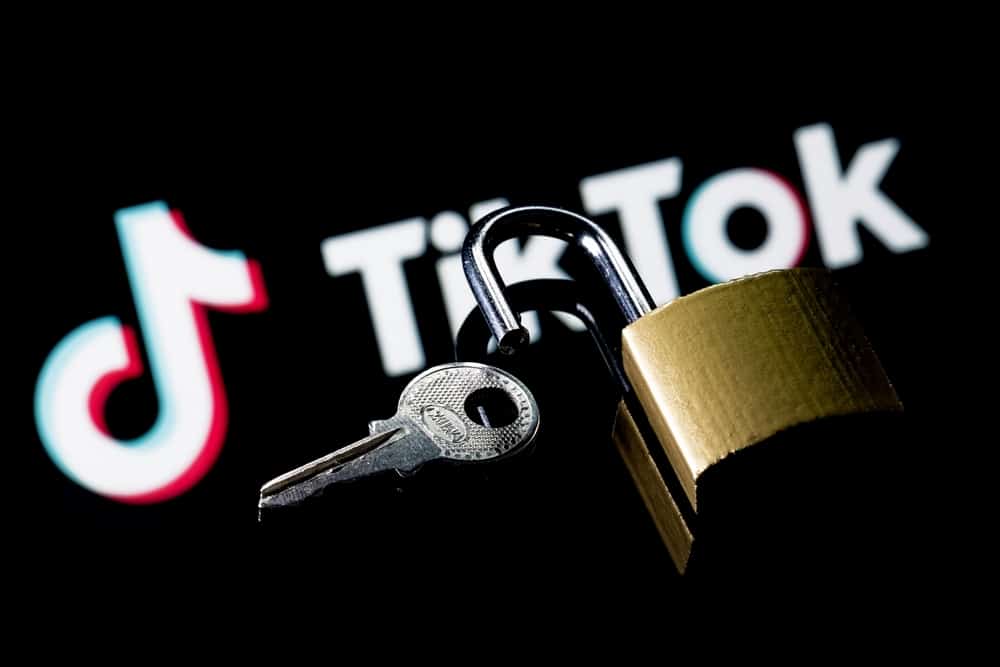
How To Unsuspend Your TikTok Account?
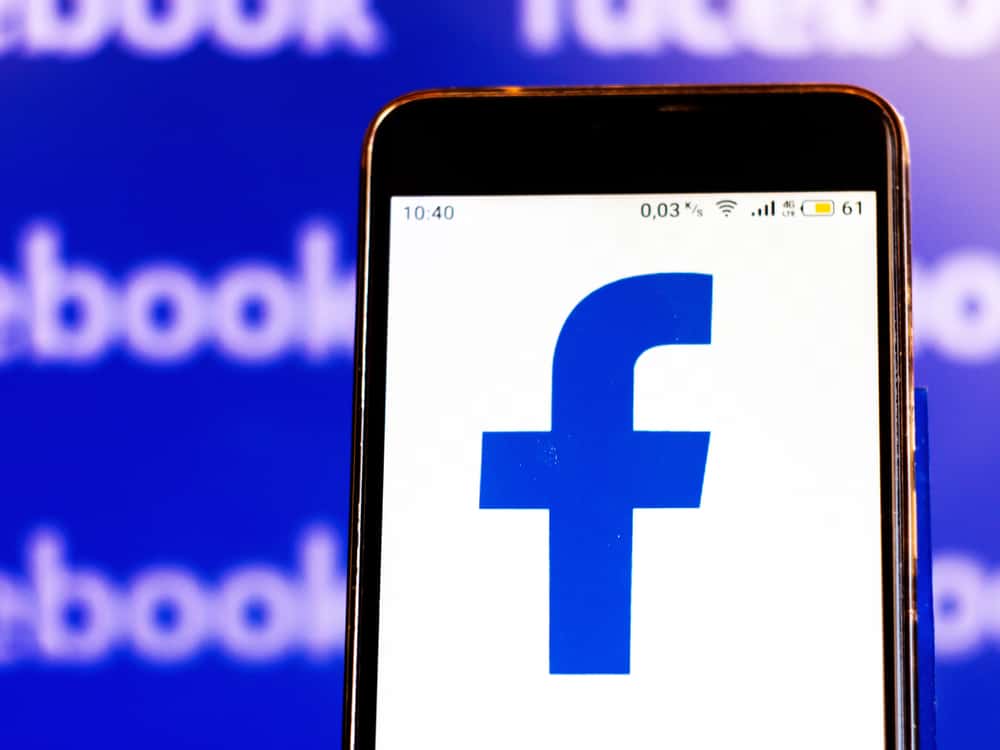
How To Change “Commenting As” on Facebook Mobile

How To Add a Profile Picture on Snapchat?
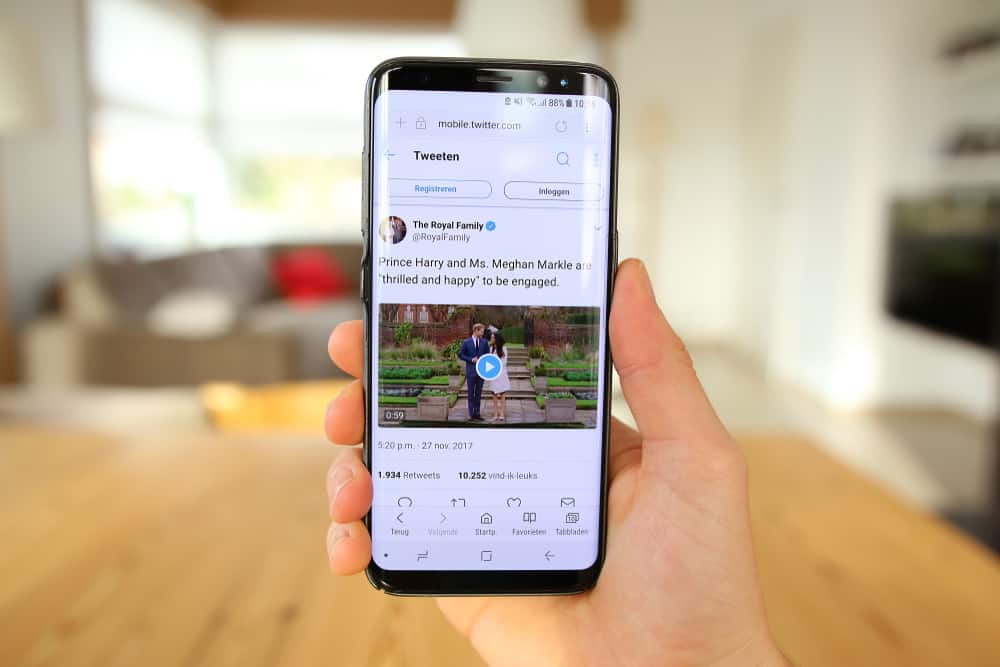
How To Tweet a YouTube Video
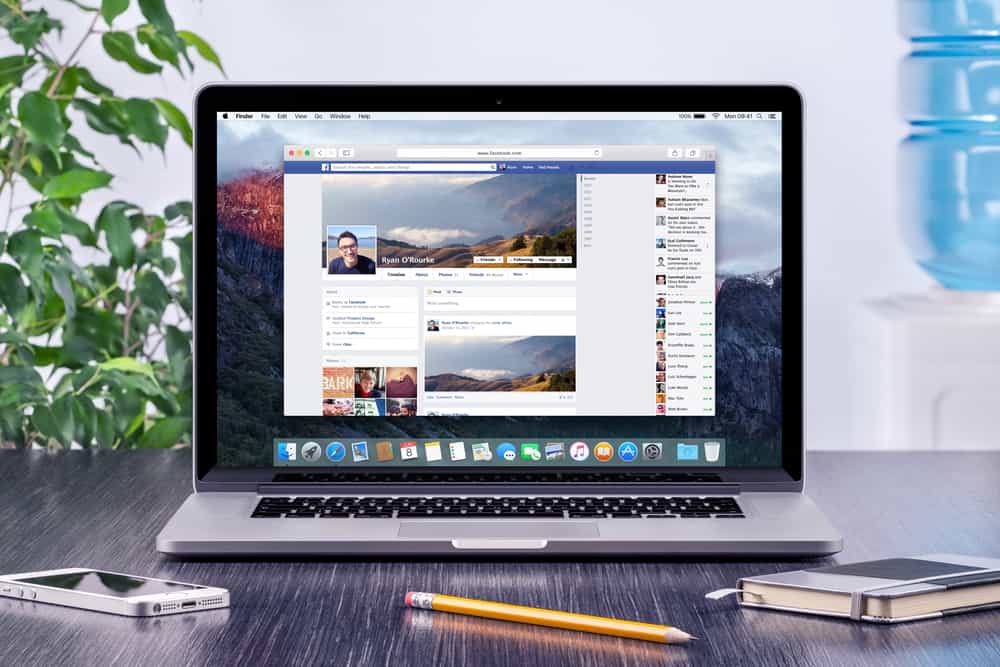
How To View Your Facebook Page as a Visitor
About the author, richard hebert, leave a comment cancel reply.
Your email address will not be published. Required fields are marked *
Save my name, email, and website in this browser for the next time I comment.
Richard is a tech-savvy writer and blogger who loves nothing more than sharing his knowledge of the latest and greatest in information technology with others. His specialty is writing extremely detailed how-to guides that can be followed by even the most inexperienced person.

Why Did Apbassing Quit YouTube?

How To Upload MP3 to YouTube
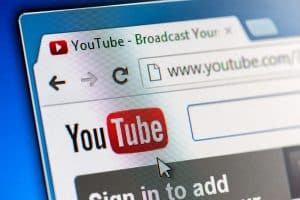
How To See YouTube Thumbnail

How To Add Photos to Facebook Album

What Does WBY Mean on Snapchat
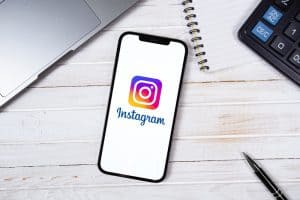
How To Print Instagram Photos?
- Resume Writing
- Resume Examples
- Cover Letter
- Remote Work
- Famous Resumes
- Try Kickresume
The Only Cover Letter Guide You’ll Need in 2024 (+Examples)
- Kaja Jurcisinova ,
- Updated January 16, 2024 13 min read
Oh, the dreaded cover letter. Job seekers hate writing it and nobody knows if anybody even reads cover letters anymore. And yet, not attaching one to your application would be a terrible mistake. This cover letter guide will tell you not only why to write one, but also how to write a really good one.
But first , why does everyone hate writing cover letters so much? After all, a cover letter gives you a unique opportunity to distinguish yourself from others.
In comparison with a resume, the cover letter allows you to provide details that didn’t fit in on your resume and demonstrate your passion.
All the negativity that surrounds the cover letter probably comes down to the fact that good cover letters require a bit of alchemy. They also take time to write.
This guide will help you avoid any mistakes and write a strong cover letter that will catch the recruiter’s attention. We also include cover letter examples.
Generally speaking, you want to make your cover letter:
- easy to read for the recruiter;
- well-structured;
- max 4 paragraphs/1 page long;
- professional in both tone and greetings;
- tailored for the specific opening.
Let's get to it!
Table of Contents
Click on a section to skip
Why should you write a cover letter?
How do recruiters read cover letters, how to write a great cover letter in 9 simple steps.
- What if you're told to NOT submit a cover letter?
Final cover letter tips and hacks
Cover letter examples.
So, how exactly is the cover letter important for your job application?
Some may argue that the cover letter in 2024 isn't really relevant anymore. In fact, one study stated that only 18 percent of hiring managers think cover letters are a key part of an application.
However, don’t get fooled by these statistics. While your resume may be considered more important during the hiring process, including a well-written cover letter can increase your chances of landing a job.
For instance, 83% of hiring managers would be convinced by a really good cover letter — even if the resume wasn’t good enough, according to this study .
And there's more to it.
Some of the key advantages of the cover letter are:
- It’s much less structured than the resume and lets you develop a story.
- It gives you space to get a little more creative.
- Your personality can shine through thanks to it.
- You can elaborate on key achievements mentioned in your resume.
- It helps explain a lack of experience, career change, or an employment gap.
In other words, the cover letter is a perfect chance to bridge the distance between you and a recruiter even before the actual job interview .
Pro tip: Before writing a cover letter, make sure that you have a powerful resume that matches the job description. Because if your resume doesn’t fit a desired profile, your cover letter probably won’t get read at all. To learn more, you may want to check out our Ultimate Resume Guide .
First, they read them to decide if you’re the right fit for a position. For this reason, avoid generic write-ups at all costs. What recruiters love to see is a short persuasive argument of why you fit the role and the company. Something like this:
“I was happy to hear about this job opening from my former manager, Jane Anne. She and I have worked together on many projects throughout the years and she thought that I would be the perfect match for this position.“
Second, recruiters are looking for inconsistencies . For instance, if your resume shows attention to detail but your cover letter is addressed to the wrong person, wrong company, and is filled with typos, it's inconsistent. You want to ensure the number of inconsistencies is kept to a minimum.
Third, they're trying to get a hint of your personality . Cultural fit is important to many companies.
So, throughout the process of cover letter writing, it's essential to keep in mind the recruiter who's going to be the recipient of your letter.
Because at the end of a day, a good cover letter shouldn't be solely about you — it's supposed to be written with the hiring manager in mind.
So ask yourself:
- Is my cover letter easy to read?
- Have I addressed the right person in the opening?
- Will it help them decide if I'm the right fit?
- Did I use the right tone of voice that fits their company culture?
If you answered “no” to any of these questions, our cover letter guide is exactly for you.
Writing a cover letter may seem like a challenging task at first but if you know a few key cover letter rules, the process can become much easier.
Before you start writing your cover letter, find out more about the company you're applying for. Look at their website and LinkedIn . The research also includes looking at the job description very closely and identifying any recurring keywords. Also, search for specific cover letter examples for the role online.
Placed at the very beginning of your cover letter, the header is where you include your contact information (i.e. your full name, email address, phone number) and the company's contact information (i.e. the manager’s or recruiter’s name, job title, department, the name of the company, company’s address).
When in doubt, try to use this formula: Number or Trigger word + Adjective + Keyword + Promise. The result can look something like this: 5 Ways I Can Help You Improve Your Company’s [insert a position-related keyword]
If the name of the hiring manager isn't written in the job posting, research their name and contact information online. For example, look at the company's page or LinkedIn. Then, greet them by saying "Dear [first name]" . If, however, the company culture is very formal, go for the classic "Dear Hiring Manager" .
The first paragraph is the perfect place to shortly explain why the job seems exciting to you and why you’re the right person for it . You can also compliment the company or name a mutual acquaintance who referred you.
Try to answer these questions: 1. What did you do at a previous position that gave you relevant experience? 2. How could this experience help the new company grow? 3. Which of the projects you have worked on would benefit their business? 4. Which of your skills make you well-equipped for the position? 5. Do any of these skills give you an edge over other candidates?
The following questions should help you : What excites you about the idea of working at this company? How do the company goals align with your own? What do you hope to gain and learn from working there?
In the cover letter closing paragraph : reiterate that your experience and enthusiasm make you a great candidate, add a confident call to action, express gratitude, and always use a formal sign-off.
You can either attach the cover letter as a separate document in the email when sending your resume , or send it directly in the body of the email (that way they can't ignore it).
In the following chapters we look at each step more closely and include specific examples you can copy and paste.
Step 1: Prepare and do some research
Knowledge is power. Before you begin writing:
- Find out more about the company and the position you're applying for. Spend some time on the company’s website, its executives’ Twitter feeds, and employee profiles on LinkedIn. It will also help you decide on the tone of your cover letter. For example, if it’s a company like Kickresume , you can easily get away with more unusual approaches. But if it’s a conservative institution, like a bank or a lawyer's office, you should probably keep it formal.
- Search for specific cover letter examples for your role online . Pick some examples that fit your role and use these for inspiration. (By the way, that link just now will take you to our database of successful cover letters from real people who got hired. Totally worth checking out.)
- Look at the job descriptions of the roles you’re applying for . Identify major experience and hard skill keywords, so you can insert them in your letter in the relevant sections.
Once you've done this basic research, you can finally start thinking about the structure of your cover letter.
This short infographic will show you that writing a cover letter is a lot simpler than you might have thought:
Step 2: Include a header with basic info rmation
Placed at the very beginning of your cover letter, the header is the place where you should include your contact information and the contact information of the company.
A cover letter is still a letter, after all.
At the left side of the page include the information based on which you can be reached by the recruiter.
Here, make sure to include:
- your full name
- your email address
- phone number
Optionally, you can also add:
- your professional title
- address (if it vaguely matches the location of the job offer)
- current date
- personal website/LinkedIn
The top right side of the page is reserved for company-related information. Here, you should put:
- the manager’s or recruiter’s name (if available)
- job title
- the name of the company
- company’s address
Not a fan of writing?
Our AI writer will write the first draft of your cover letter for you.
Step 3: Write a strong cover letter headline
When you’re browsing the web, what articles usually catch your attention? Those with great headlines, of course!
The same applies to cover letter headlines.
Start by paying attention to the headlines around you — especially in tabloids and websites like Buzzfeed (Is Buzzfeed still a thing? How very 2010s of me). These are usually designed to stir up your interest and make it impossible to not click through.
Notice how they use numbers, questions, and interesting adjectives to promise the reader to learn something valuable.
And you can do the same in your cover letter.
When in doubt, try to use this formula: Number or Trigger word + Adjective + Keyword + Promise.
The result can look something like this:
- 3 Reasons Why I’m An Excellent Fit For [Job Position]
- Are You Still Looking To Fill The Position Of [Job Position]? This Is Why I Believe I’m Exactly Who You’re Looking For
- 5 Ways I Can Help You Improve Your Company’s [insert a position-related keyword]
Finally, don’t forget to adjust your header to the company’s level of formality and put your headline in the subject of the email.
Step 4: Use the correct form of greeting
In this time and age, there’s no excuse for using “To Whom It May Concern.”
If the name of the hiring manager isn't written in the job posting, you’re expected to research their name and contact information online. For example, look at the company's page or LinkedIn.
Once you have their name, feel free to go for a personalized greeting:
“Dear [first name]” or “Dear Mr./Mrs. [last name]”
Honorifics (e.g. Mr., Mrs., Ms .) are more appropriate if the company’s culture is formal.
And if you cannot find the recruiter’s name, it's okay to go for a generic:
“Dear Hiring Manager”, or “Dear Recruitment Officer”
Alternatively, you can address the letter to the whole company team or the HR department. In this case, your greeting should look like this:
“Dear [name of the company/department] Team” or “Dear Human Resources”
Step 5: First paragraph: Introduce yourself with a BANG!
The best way to start a cover letter is to open strong. The first impression matters the most and busy recruiters often have a chance to properly dive into only a few selected cover letters.
So if you make your first paragraph captivating, chances are that your letter will be one of the lucky ones that actually end up being read.
In fact, the first paragraph is the perfect place to shortly explain why the job seems exciting to you and why you’re the right person for it.
While most people begin their letters with “I’m applying for the position X I saw in Y place,” it's a waste of space.
Instead, open with a sentence like this:
“I’m a content marketing professional with more than 5 years of experience and I’d love to bring my ability and passion to your team.”
In the first paragraph, you can also:
- Compliment the company. Show that you know details about the company and you’re approaching it for a reason. For example, demonstrate appreciation for what the company does. Not only will this flatter them, but it will also provide them with insight into who you are.
- Name a mutual acquaintance if you can. This is sometimes called a “magic bullet,” as it’s the one thing that will assure the hiring manager reads your cover letter until the end.
However, limit the introduction to 1-3 sentences. This isn’t the place to go into detail about what makes you ideal for the role — save that for the second and third paragraphs.
Step 6: Second paragraph: Explain why you’re a great fit for the company
The second paragraph is the place where you should sell yourself and your experience.
Here, write a short summary of your career, skills and accomplishments, tailored to fit what the company is looking for.
You already did your research, so now it's time to ask yourself these questions and try to address them in your cover letter:
- What did you do at a previous position that gave you relevant experience?
- How could this experience help the new company grow?
- Which of the projects you have worked on would benefit their business?
- Which of your skills make you well-equipped for the position?
- Do any of these skills give you an edge over other candidates?
After you’ve picked the most relevant accomplishments, put them at the start of your letter.
However, when talking about them, avoid sounding like you’re bragging. The best way of doing this is to focus on your experiences rather than yourself . Ideally, support your claims with concrete examples.
Also, mention any other additional relevant hard skills or knowledge areas they’re looking for, as well as any qualifications.
Finally, the second paragraph is the perfect place for showing that you’ve done your research. Demonstrate that you’re familiar with some of the challenges that the company faces and present how you can help them.
Pro tip: Don’t simply repeat the same things you’ve already put on your resume. You want to go beyond that (this applies to every other section of your cover letter).
Step 7: Third paragraph: Explain why the company is a great fit for you
In this paragraph, you want to show that you’re serious about developing your career at this new company. And good companies want to know why they appeal to you and how will your professional relationship be mutually beneficial.
Consider addressing the following questions:
- What excites you about the idea of working at this company?
- How do the company goals align with your own?
- What do you hope to gain and learn from working there?
For example, you can say something like this: “I've seen on your website that you heavily focus on cryptocurrency projects. As a cryptocurrency enthusiast, I would love to join your team”.
However, don’t go overboard with flattery and stay professional.
Also, don’t say anything that isn't true or you don’t mean it, as it will probably come up again in the later stages of the application process.

Step 8: Closing paragraph: Finish strong and stay in touch
Now that you’ve nailed the main part of your cover letter, you also want to finish strong. This way, the recruiter will remember you in a good light. But how do you achieve that?
- Reiterate that your experience and enthusiasm make you a great candidate. This is to emphasize the two main points from the previous paragraphs. Do this in one or two sentences, not more.
- Add a confident call to action. In a sentence or two, you should suggest the next steps. Something like “ I would love the opportunity to meet with you and discuss the value I can bring to [company]."
- Express gratitude. Simply thank them for their time and for considering your application.
- Always use a formal sign-off. Something like “ Sincerely , Best wishes , or Respectfully” . Finish by typing out your full name.
Step 9: How do you send a cover letter?
I can’t stress this enough — unless it's specifically required to attach the cover letter to the body of the email, consider not sending your cover letter as a document attached to your email.
Instead, put it inside the body of the email . The email itself is now your cover letter! This way the recruiter won't ignore it.
However, remember that hiring managers receive hundreds of emails a day. So if you want your email to get read, it's the subject line that's likely to play the most important part.
As we've advised before, if you have a good resume headline, simply put it in the email subject.
However, if you’re unhappy with the result, you have other options, too.
For instance, if you have a reference, include it already in your email subject line:
Referral from Jose Nachos: Pedro Tacos, candidate for a senior software analyst position
If you don't have a reference or a catchy headline, check out more tips on how to write the best subject line for your email .
Finished writing your cover letter?
Make it stand out with an eye-catching design.
What if you're told to NOT submit a cover letter?
Today, many companies are using online application systems that discourage applicants from attaching a cover letter.
Instead, they have their own application systems where in different sections you're required to fill in the information you would normally place in your cover letter.
If this is the case, just work with the format they gave you.
In other words, include the same information that you'd normally have in your cover letter but place it in the correct sections.
And don’t forget to follow the cover letter principles:
- explain why you're the right candidate;
- make it clear that you've researched the company well;
- indicate in what way you'd be an asset;
- mention your biggest past achievements.
Because no matter the format, you're still expected to present your skills and convey enthusiasm about the job.
Alternatively, you can also try to find a relevant manager or a recruiter online (either on the company pages or LinkedIn) to whom you can send a brief follow-up email with an attached cover letter.
Now that we've covered the basics, there are several other tips that you should keep in mind to elevate your cover letter to the next level:
- Keep it short. Limit your cover letter to three to four paragraphs and a maximum of one page. Hiring managers are busy people who often don't have time for reading long texts.
- Keep it clean and easy on the eye. Take a look at how this article is written. It’s replete with short paragraphs, sentences typed in bold letters, bullet points, and numbers. All of these make reading and searching for specific information easier. So, never send a letter that looks like an unreadable wall of text. The easiest way to achieve a sleek cover letter design is to use a pre-formatted cover letter template .
- Don’t risk being funny if it ’ s a company with a formal work culture. Poorly executed humor will hurt your chances rather than help. Being direct and dynamic is a much surer way to catch the recruiter’s attention than a number of jokes. On the other, if the company is smaller or known for its creative products, being original may in fact help your chances!
- Show, don’t tell. Usually, there’s no point in saying you’re “a dependable hard worker” or “a creative thinker.” Why should anyone believe such generic statements? Instead, offer an example of how these qualities helped you achieve something in the past.
- Never write the same letter twice. A cover letter should always be tailored to a specific job application. Remember the previous sections? You’ve made a great effort to research the company and its hiring managers, so you’ve written your cover letter accordingly. This is a process you need to repeat with every application (ugh, I know).
- Check for typos. This goes without saying but make 100% sure your cover letter is without typos. There’s no reason to believe you're competent if you can't even type without errors. Moreover, typos automatically reveal almost criminal carelessness on your part, since every text editor nowadays has a spellchecking feature.
- Don't use any buzzwords. Your cover letter needs to be authentic and persuasive — and buzzwords are neither. If anything, they simply give the impression of you being someone who's just trying to fit a skewed idea of what an ideal corporate employee should be. Instead, focus on using relevant keywords from job descriptions.
Now, if you have no experience yet because you're just starting out or you're changing careers, writing a cover letter can be scary. However, a well-written letter can actually be your best friend.
And this is how you write the perfect cover letter with no experience .
In the end, there are many different ways to write a great cover letter. And even if you follow the cover letter guide above, you’ll end up with a cover letter that's invariably your own.
It all depends on your own personality, the position you’re applying for, and the hiring manager’s preferences.
And that's good, actually!
Still, there's a lot to learn from cover letters written by other people. That's why we've selected five cover letter samples that deserve your attention.
Each of these helped real job seekers find real jobs in real companies. They'll teach you valuable lessons you can use in your own cover letter.
1. Norwegian — Cabin Crew Cover Letter Example
This cover letter sample was provided by a real person who got hired with Kickresume’s help.
2. Volvo — Machine Learning Intern Cover Letter Example
3. tory burch — account executive cover letter example, 4. lush — sales associate cover letter example, 5. romeo — social media officer cover letter example.
Do you still need some more inspiration? You can find more examples in our cover letter library
FAQ: How to write a cover letter
250 to 400 words is the standard cover letter length range. A cover letter should never exceed one page.
Yes! Show that you can go that extra mile and stand out from the crowd of applicants.
Ideally, use a pre-formatted cover letter template. Then use a simple and professional font, such as Times New Roman. The font size should be between 10-12.
If you have the name of the hiring manager, try to find their contact on the company page or LinkedIn. If you still can't find the right person, you can address it to the whole team or HR.
This article was recently updated. The original article was written by Martin Poduska in 201 7.
Kaja Jurcisinova is a junior copywriter at Kickresume. Kaja completed her undergraduate degree in Art History at the University of St Andrews in 2018 and graduated with a Master’s in Arts and Culture from the University of Groningen in 2021. She was an intern at multiple cultural institutions across Europe, including the Dutch Museum Association in Amsterdam, the Matter of Art Biennale in Prague, and the European Cultural Centre in Venice. At the moment, she resides in Visby on the Swedish island of Gotland.
Related Posts
Resume format: what’s the best resume format for 2024 (+resume templates), resume headings: use these headlines in your cv to beat the ats game, share this article, join our newsletter.
Every month, we’ll send you resume advice, job search tips, career hacks and more in pithy, bite-sized chunks. Sounds good?
- Terms And Conditions
- Privacy Policy
- Editorial Policy
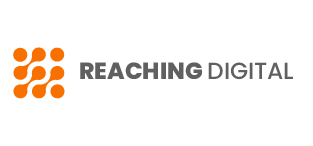
Home » 13+ Best Linkedin Cover Letter Samples
13+ Best Linkedin Cover Letter Samples
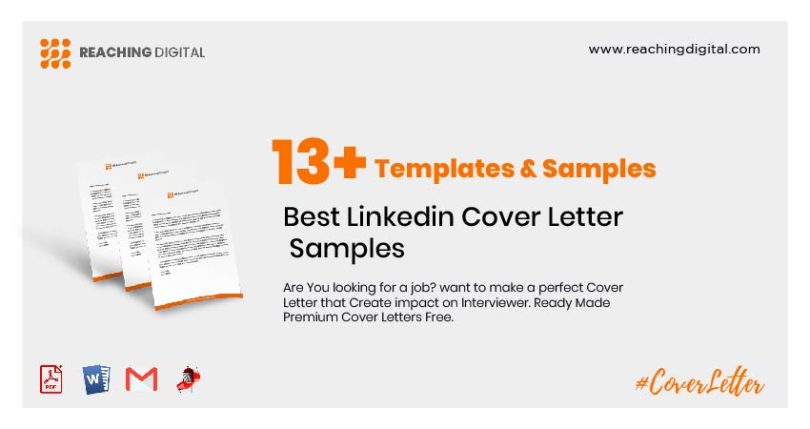
There’s no doubt that a great LinkedIn profile can open doors for job seekers. But did you know that a well-written LinkedIn cover letter can be just as important?
A LinkedIn cover letter is a chance to capture the attention of potential employers and stand out from the competition. And with more and more employers using LinkedIn as a recruiting tool, it’s important to know how to write a cover letter that will get noticed.
Fortunately, we’ve got you covered. In this article, we’ll share some of the best LinkedIn cover letter samples to help you get started. From there, you can start tailoring your own cover letter to fit your needs. So what are you waiting for? Let’s get started!
Table of Contents
How To Write a Linkedin Cover Letter?
LinkedIn can be a powerful tool for networking and job searching. Many employers use LinkedIn to post job openings and reach out to potential candidates. And while you don’t necessarily need a cover letter when applying for a job on LinkedIn, including one can help you to stand out from the competition.
Here are some tips for writing a LinkedIn cover letter:
- Keep it short and sweet. Just like with any other type of cover letter, you don’t want to ramble on or include unnecessary information. Be concise and to the point.
- Use keywords. Take a look at the job listing and include some of the same keywords in your cover letter. This will help your application to be found by recruiters using LinkedIn’s search function.
- Highlight your skills and experience. In your cover letter, be sure to mention any relevant skills or experience that make you a good fit for the position. If you have a personal connection to the company, this is also a great opportunity to mention it.
- Use rich media. LinkedIn allows you to include rich media in your cover letter, so take advantage of this! You can upload images, videos, or even presentations that showcase your skills and experience.
- Proofread carefully. As with any written communication, it’s important to proofread your cover letter carefully before hitting “send” or “apply.” A few typos could give the impression that you’re careless or not taking the application process seriously. following these simple tips, you can write a powerful LinkedIn cover letter that will help you get noticed by potential employers. So go ahead and give it a try!
Related: How To Write a Cover Letter (And Get Hired in 2022!)
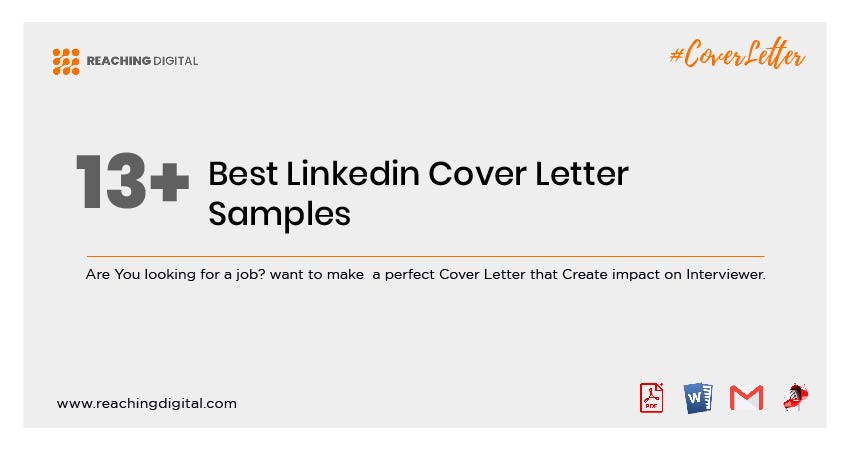
Linkedin Easy Apply Cover Letter
To Whom It May Concern,
I am writing to apply for the position ofXYZ that I saw on LinkedIn. I believe that my skills and experience make me the perfect candidate for this role.
As a XYZ professional, I have a deep understanding of the XYZ process. I am able to quickly identify areas of opportunity and work with teams to develop solutions that drive results. In addition, I have experience leading XYZ initiatives and projects. My strong communication and project management skills have helped me to successfully navigate complex organizations and deliver on objectives.
The confident that I can be a valuable asset to your team. I am eager to utilize my skills and experience to help your organization achieve its goals. I look forward to discussing my qualifications in further detail.
Thank you for your time and consideration.
Related: 07 Professional MBA Cover Letter Samples [Free]
Cover Letter Examples Linkedin
My name is ________ and I am a recent graduate of ___________. I am interested in obtaining a position as a ___________ in your company. I am attaching my resume for your review and would appreciate any opportunity to discuss my qualifications with you further.
Related: 07 Best Networking Cover letter Samples
Cover Letter Template Linkedin
The writing to apply for the position of ___________ with your company. It is a ___________ with ___________ years of experience in the field. I am knowledgeable in ___________, ___________, and ___________. I have attached my resume and would appreciate if you could contact me for an interview at your earliest convenience. Thank you for your time.
Related: 9+ Best cover letter for retail job Samples & Templates
Cover Letter Sample Linkedin
I am writing to express my interest in the position of XYZ that you have posted on LinkedIn.
As a recent graduate of ABC University with a degree in XYZ, I believe that I have the skills and qualifications that you are looking for in a candidate. In addition to my academic achievements, I have also gained valuable experience through my internships with DEF Company and GHI Organization, where I developed my skills in XYZ.
I am confident that I can be a valuable asset to your team and contribute to the success of your organization. I am eager to put my skills and experience to work in a professional setting, and I believe that this position would be an excellent opportunity to do so.
Thank you for your time and consideration. I look forward to hearing from you.
Related: Indeed Cover Letter: 07 Templates and Samples
Cover Letter For Job Application Linkedin
I am writing to apply for the job of ___________ that I saw advertised on LinkedIn.
I have _____ years of experience in this field and I am confident that I have the skills and qualifications that you are looking for.
Some of my key strengths include:
- -Strong communication skills
- -Leadership qualities
- -Ability to work independently
- -Organizational skills
- -Creativity
I am a motivated individual who is always looking for new challenges. I am confident that I would be a valuable asset to your team and I look forward to the opportunity to learn and grow in this role.
If you have any questions, please do not hesitate to contact me at ___________.
Related: Best Application Letter for Job Vacancy: 09 Examples & Sample
5 Things To Include In a Linkedin Cover Letter
Although your profile photo and headline are the first things people see when they visit your LinkedIn profile, your cover letter is an important opportunity to make a good impression and stand out from the competition. So, what should you include in your cover letter? Here are five things to keep in mind:
- Your elevator pitch: Use your cover letter to briefly introduce yourself and explain why you’re interested in the position or company.
- Your key qualifications: Highlight your skills, experience, and achievements that make you a good fit for the role.
- Your connection to the company: If you have any personal or professional connections to the company, be sure to mention them in your cover letter.
- Your call to action: End your cover letter with a strong call to action, such as asking for an interview or requesting additional information.
- Your contact information: Include your email address and phone number so the employer can easily get in touch with you.
By following these tips, you can ensure that your LinkedIn cover letter makes a great first impression and gives you the best chance of being noticed by employers.
Related: What is Cover Letter? Complete Guide To Get any Job.
LinkedIn is the perfect place to find a job, and your cover letter is the best way to introduce yourself to potential employers. We’ve provided over a dozen templates of high-quality cover letters that you can use as a starting point for your own letter. We hope you found this blog helpful and that you will use these templates to write an amazing cover letter that stands out from the rest. Thanks for reading!
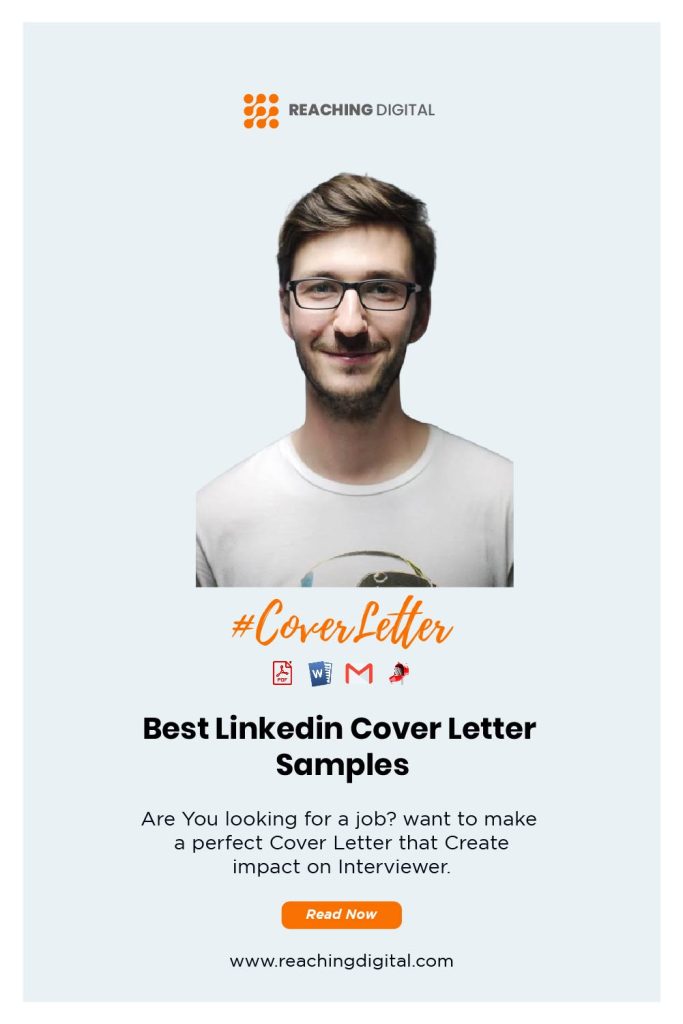
You may also like

Cover Letter for Ph.D. Application: 5 Template ideas
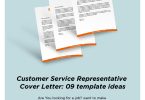
Customer Service Representative Cover Letter: 09...
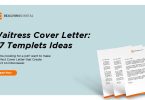
Waitress Cover Letter: 07 Template Ideas
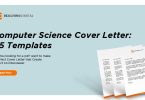
Computer Science Cover Letter: 05 Ready Template
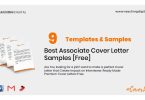
9 Best Associate Cover Letter Samples [Free]
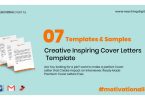
Creative Inspiring Cover Letters: 7+ Template
About the author.
Jessica William
Leave a comment x.
Save my name, email, and website in this browser for the next time I comment.
- See All Courses >
- SUCCESS STORIES
- GET YOUR FREE LINKEDIN HEADLINE SCORE >>
- GET YOUR FREE RESUME SCORE >>
- GENERATE YOUR JOB-WINNING COVER LETTER >>
- FIND ANY CONTACT’S EMAIL ADDRESS >>
- ResyMatch.io Scan and score your resume vs. any target job.
- ResyBuild.io Build a job-winning resume using proven templates and advice.
- CoverBuild.io Have AI generate a personalized, job-winning cover letter in
- HeadlineAnalyzer.io Transform your LinkedIn headline into a job-generating machine.
- ResyBullet.io Scan, score, and upgrade your resume bullets.
- Mailcoop.io Find anyone’s professional email address in seconds.
- The Job Search Email Playbook Our 100+ page guide to writing job-winning emails.
- Value Validation Project Starter Kit Everything you need to create a job-winning VVP.
- No Experience, No Problem Learn how to change careers with no experience.
- The Interview Preparation System A proven system for job-winning interview prep.
- The LinkedIn Launch Formula A proven system for six-figure success on LinkedIn.
- See All Blog Posts Check out all of our job search articles & posts.
- HeadlineAnalyzer.io Scan your LinkedIn Headline and turn it into a job-generating machine.
- LinkedIn Profile Optimization Our comprehensive guide to optimizing your LinkedIn profile.
- LinkedIn Headlines Learn how to write a crazy-effective LinkedIn headline.
- LinkedIn Profile Picture Learn how to create a job-winning LinkedIn profile picture.
- LinkedIn About Section Write a job-winning About section (with examples!)
- LinkedIn Cover Photos Learn how to create a job-winning LinkedIn cover photo.
- GET YOUR FREE LINKEDIN HEADLINE SCORE >>
- ResyMatch.io Scan your resume and turn it into a job-generating machine.
- ResyBuild.io Build a beautiful, job-winning resume using recruiter-approved templates.
- Resume Examples Check out example resumes for a range of job titles and industries.
- How To Write A Resume Learn how to write a resume that actually wins job offers.
- Resume Summaries Our guide on writing a job-winning resume summary.
- Resume Tips & Action Words 175+ tips & examples to supercharge your resume.
- GET YOUR FREE RESUME SCORE >>
- CoverBuild.io Use our tool to generate a personalized, job-winning cover letter in
- Cover Letter Examples Check out example cover letters for a range of job titles and industries.
- How To Write A Cover Letter Learn how to write a cover letter that actually wins job offers.
- Cover Letter Templates Check out our proven, job-winning cover letter templates.
- Addressing A Cover Letter Learn how to start a cover letter the right way.
- GENERATE YOUR JOB-WINNING COVER LETTER >>
- Mailscoop.io A tool to help you find anyone’s professional email in seconds.
- How To Get A Job Without Applying Online Our flagship guide for effective job searching in today’s market.
- How To Network Our comprehensive guide on learning how to network.
- Tips For Better Networking Emails 6 tips for writing networking emails that actually get results.
- What To Ask In An Informational Interview 10 great questions to ask during a networking conversation.
- FIND ANY CONTACT’S EMAIL ADDRESS >>
- How To Prepare For Interviews Our proven preparation framework for turning more interviews into offers.
- How To Create A Job-Winning Interview Presentation Learn our “silver bullet” Value Validation Project presentation strategy.
- Interview Questions & Answer Examples Job-winning example answers for common interview questions.
- What To Wear To An Interview A simple guide to dressing for the job you want.
- How To Write A Job-Winning Thank You Note Learn how to write a post-interview thank you that wins job offers.
How To Write A Job-Winning Cover Letter [Free Templates & Examples]
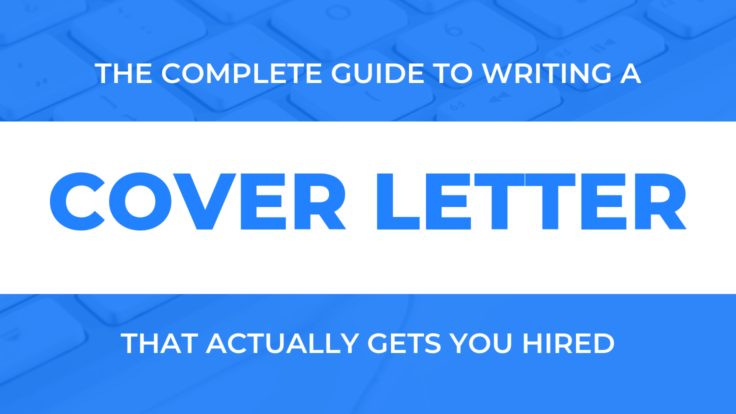
- Facebook 353
- LinkedIn 118
- Pinterest 168
Writing a cover letter can be one of the most stress inducing aspects of the job search.
The reason writing them is so difficult is because we don't have a defined framework to follow.
If you need to update your resume, you download a template and fill in the blanks. When you're applying to jobs, the employer lays out the fields you need to complete right there in the application.
But when you're writing a cover letter, you probably find yourself staring at a blank Word document wishing the right words would will themselves onto the page.
Most of us don't consider ourselves to be the next Walter Isaacson , and the task of crafting the perfect story sits well outside of our comfort zone. It doesn't help that most of the advice out there on the subject is vague at best.
And that's exactly why I wrote this post! My hope is that this guide will be the last (and only) cover letter article you'll ever need to read. We're going to take a deep dive into:
- How To Write A Cover Letter That Actually Gets Results
The 7 Cover Letter Mistakes That Cost People Jobs
- The Anatomy of a Highly Effective Cover Letter
- Nailing Your Cover Letter Format: Aesthetics, Structure, Style, & File Type
- Cover Letter Templates & Real Examples From Microsoft, Google, & More
Ready to rock and roll? Let's dive in:
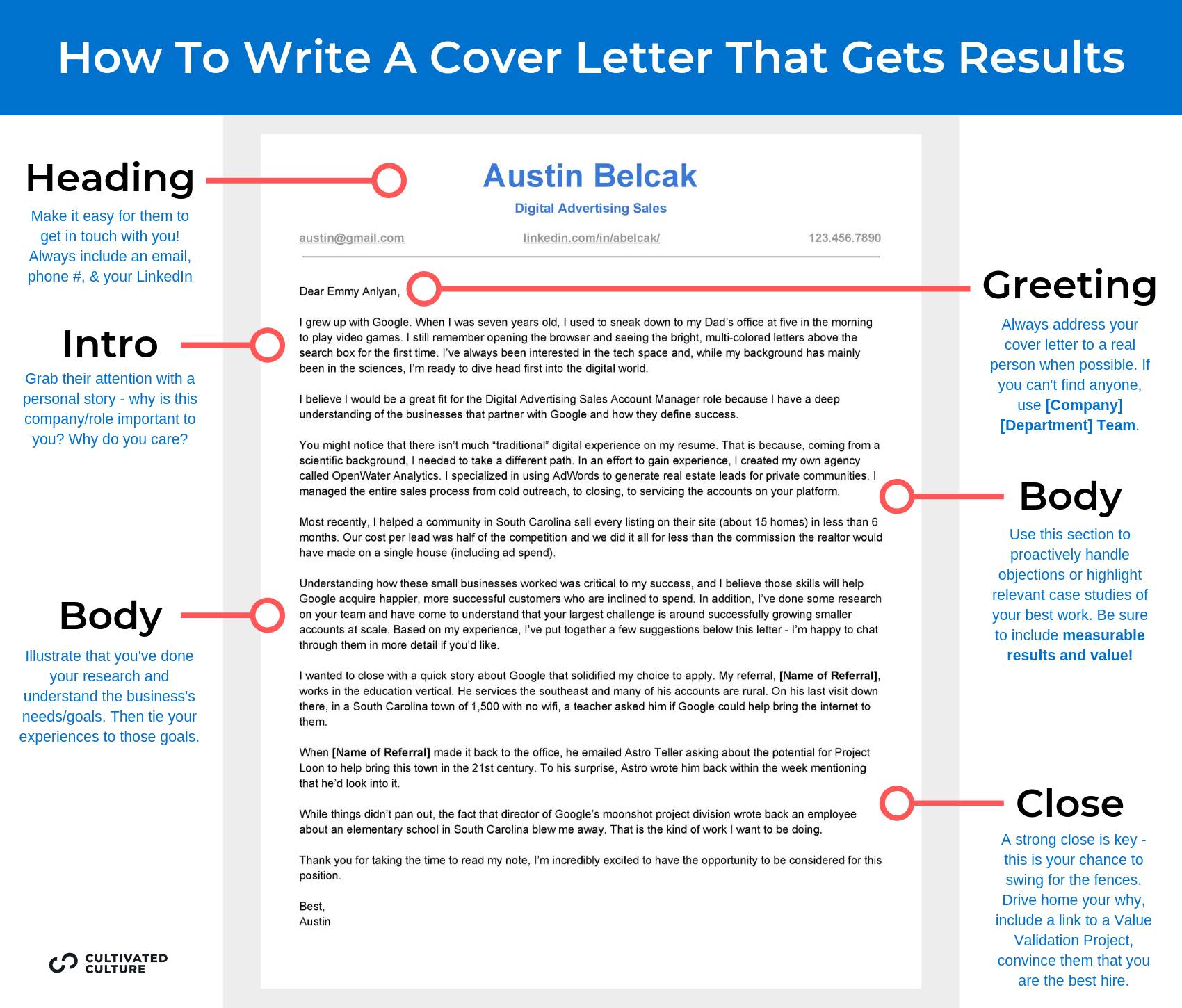
Writing A Cover Letter That Actually Gets You Hired
I did a quick Google search for “How To Write A Cover Letter,” and here are a few things that the “experts” recommend:
- Assess the employer's needs and your skills. Then try to match them in the letter in a way that will appeal to the employer's self-interest.
- Arrange the points in a logical sequence; organize each paragraph around a main point.
- Basic fonts like Arial, Calibri, Georgia, Verdana, and Times New Roman work well. A font size of 10 or 12 points is easy to read. Standard margins are 1” on the top, bottom, and left and right sides of the page.
- Be sure to include positive traits like “Focused,” “Hard Working,” and “Results Oriented”
While all of this advice is technically correct, did you feel your confidence skyrocket when you went back to type out that first sentence?
Yeah, me neither…
Here's the thing – most career “experts” out there give vague advice that they've seen work in their corner of the market. It doesn't get too specific because many career coaches (even recruiters) have never been through the application process at a world class company. They don't know the nitty gritty.
When they do give specific advice, it's usually tailored to a niche – software development, tech sales, finance, etc. But what works for one person in one industry or role might not work for a similar person in a different situation.
I'm hoping to change things with this article.
Over the course of this post, I'm going to lay out the cover letter strategies that thousands of my clients have used to land jobs across industries and at companies like Apple, Amazon, Google, Facebook, Microsoft, Deloitte, ESPN, American Express, and more.
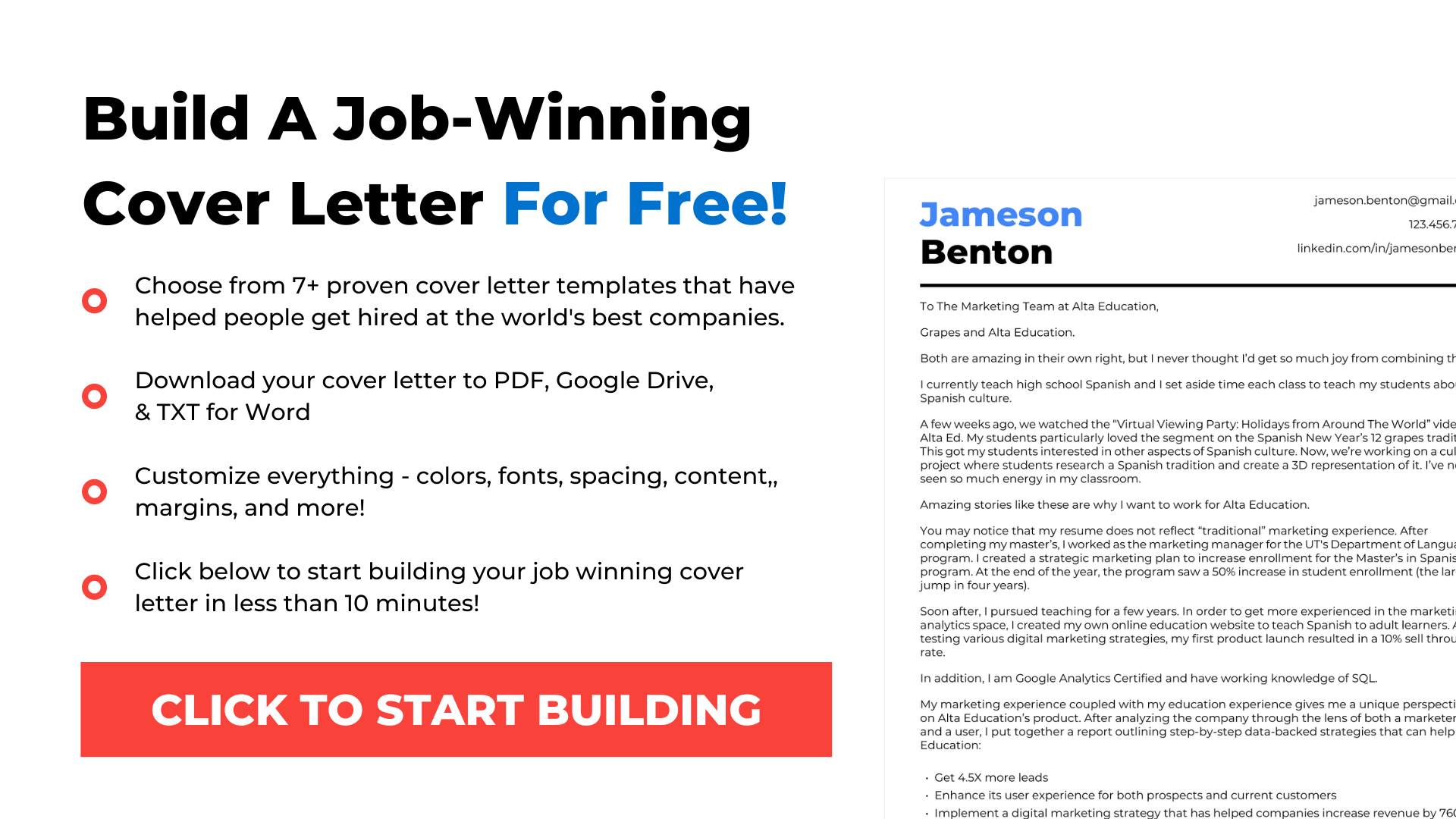
The Truth About Cover Letters (Does Anyone Read Them?)
Before we dive into the actionable stuff, I want to provide some context on where cover letters fit in the hiring process.
Cover letters are a strange animal. People seem to think that they are the missing link that will suddenly skyrocket the response rates of potential employers.
When I asked my audience to choose between a guide on cover letters, resumes or LinkedIn profiles, cover letters won out by a significant margin.
The truth is, in the mind of a recruiter/hiring manager, your cover letter is a tie breaker that is only read after the rest of your application has been reviewed. 74% of recruiters don't even read cover letters. However, over half of employers noted that they prefer candidates who submit a cover letter:
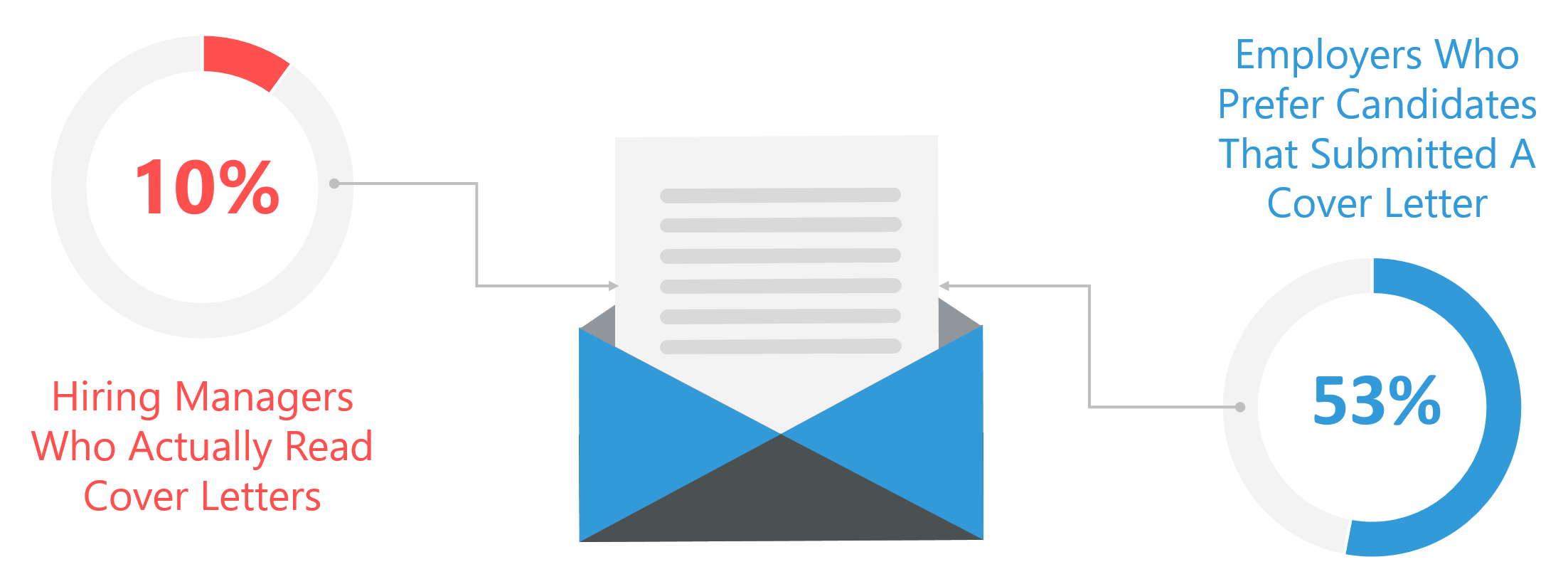
This leaves us in an interesting place.
We need to craft a good cover letter to help boost our chances, but we don't want to spend several hours doing so because there are far better ways to spend our time to get results during the job search. If you follow the networking and value-add strategies in my other articles , those strategies are going to be far more effective at breaking ties than an 8.5 x 11″ sheet of paper.
My hope is that this guide will give you a framework that enables you to efficiently craft cover letters that are more likely to get you hired.
If we want our cover letter to be as effective as possible we need to make sure we avoid the mistakes that employers hate to see, yet most people still make.
In order to be as accurate as possible, I went out and spoke to recruiters from Google, Microsoft, and a few Wall Street firms on top of my own research. Then I cross referenced that information with the several hundred cover letters that have come across my desk at Cultivated Culture.
After all was said and done, here are the 7 most common mistakes people make on cover letters that will cause recruiters to throw out their application:
#1: Typos, Grammatical Errors, And General Sloppiness
This is the most obvious and most common issue. 80% of recruiters noted that they would automatically toss a cover letter with some type of spelling or grammatical error. The good news is that it's also the easiest mistake to fix.
Before you submit your cover letter, make sure it's reviewed by at least two other parties. You might want to consider hiring a professional editor/proofreader as they're not too expensive for a short document and they will pick up on things most people would miss. It's easy enough to find one on Upwork .
Another trick you can use is including an obvious mistake about 75% of the way through. If you have “catching Bustin Jeiber's sweaty t shirt at a concert” sitting in there and someone doesn't call you out, you know they probably didn't read it very carefully.
#2: Going Over A Single Page
The vast majority of the resumes and cover letters I receive are over a single page. Funnily enough, the vast majority of the recruiters I speak to also tell me that they absolutely hate resumes and cover letters that are more than one page.
The ideal length for a cover letter is one page. Changing the margins, font, and font size are all fair game – just keep things on one page, capisce?
#3: Regurgitating Your Resume In A Slightly Different Format
Your cover letter is a space for you to truly differentiate yourself. If you're just taking the bullets on your resume and turning them into full sentences, you're missing out on a HUGE opportunity.
Use the cover letter to show a little personality and share something that people wouldn't know if they just scanned through your resume (more on that in a sec).
Remember, this is a tie breaker. If your cover letter isn't holding people's attention it's probably going to lose out.
#4: Focusing On Training Or Arbitrary Credentials Instead Of Results
Many of us feel unqualified for the jobs we want. As a result, we try to twist our experience to match the traditional qualifications for our target role.
The problem with this approach is that you are competing against people who qualify for the traditional credentials, no matter what role you're applying for. If you try to beat them at their own game, you're going to lose 9 times out of 10.
Am I saying you should forget about trying to spin your experience to position yourself well? Absolutely not. However, adding that business class on your resume when you're 4-5 years out of college isn't going to help much.
Instead, focus your time outside of work on building tangible results that you can showcase in your cover letter (and resume). If you want to be a developer, take a few coding courses and build something cool. If you want to be in digital marketing, land a few clients and run their ads for them.
Telling a story about how you took proactive steps to build experience in a field will beat traditional credentials in most cases. Companies love to see that you're hungry to learn.
#5: Not Addressing Your Cover Letter To An Actual Person
I die a little bit inside when I see cover letters addressed as “Dear Hiring Manager” or “To Whom It May Concern.”
Anyone who reads that is immediately going to mentally bucket it as impersonal. It's far better to address your cover letter to an actual human, even if it doesn't end up in their hands. Here is my strategy.
Let's say I'm applying for an Account Manager role at Google:

I'm going to head over to LinkedIn and start by working to find the specific person who would manage the role I'm applying for. If I can't find them, or I'm unsure, then I'll aim for the most senior person that my target role would fall under.
The ladder for Account Managers typically follows with Senior Account Manager, Account Director, and VP. I'm going plug in “Account Director” under LinkedIn's title filter to cover all of the bases there. Then I'm going to add “Google” in the company filter and “Greater New York Area” in the location filter:
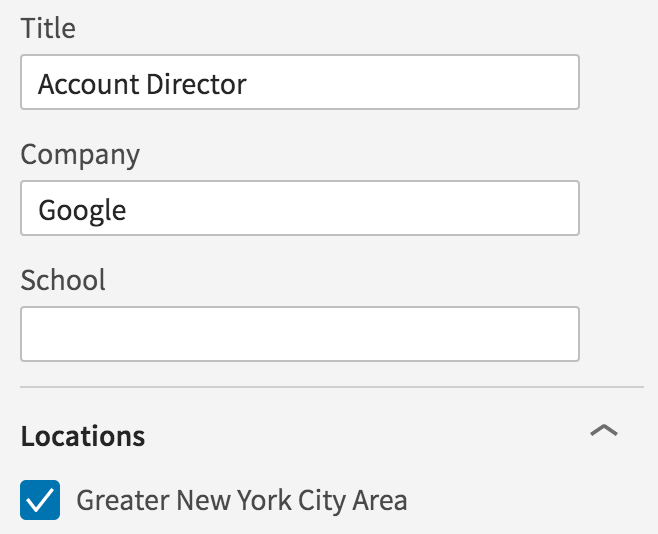
That search is going to bring up a slew of people that I could address directly in my cover letter:

Regardless of who reads your cover letter, they'll know that you did your research. On top of that, your cover letter might even make it into the hands of the person you addressed it to!
#6: Failing To Showcase Any Personality
As mentioned earlier, your cover letter is one of the few opportunities for you to truly differentiate yourself from the competition. If you're applying for jobs online (which I don't recommend), the only thing you have to sell yourself is your resume, your cover letter, and your application.
Instead of rehashing the experience on your resume, tell a story about how you got that experience. Make it unique and personable. I had the most success when I talked about how I transitioned from a job in medicine to the tech world by starting a side business generating leads for real estate agents. I'd speak openly about the challenges I faced, the mistakes I made, and why I went through it all in the first place.
Use this space to tell your story. Remember, people don't buy what you do – they buy you why you do it.
#7: Writing About An Uncomfortable Situation
While we're on the topic of telling stories, there is one thing you want to avoid – talking about something extremely uncomfortable. What might have worked for your college essay isn't going to work here.
You want to keep things professional. It's okay to talk about business-related mistakes and challenges, but try to steer away from deeply personal stories. They are far more likely to hurt than help.
If your cover letter doesn't violate any of the rules above, you're off to a good start! Next, we want to make sure your cover letter is formatted the right way and your content is on point to grab the reader's attention and get you in the door.
The Anatomy Of A Highly Effective Cover Letter
When I was job searching, one of the most frustrating things was trying to get a clear picture of what to include in my resume/cover letter/application. There is so much conflicting “expert” advice online it makes you feel like you're shooting in the dark.
When I started Cultivated Culture, I began tracking how different factors influenced the success of my students. After working with hundreds of job seekers over the past few years, I've found a strong correlation between the following factors and a high rate of successfully landing interviews:
Capitalize On Your Cover Letter's Header
Most people don't realize that when they hit “submit” on their app, their cover letter gets scanned by a piece of software that extracts specific information and stores the data so recruiters can easily find and assess candidates.
One of the major keywords they look for is a matching or relevant job title. If you're applying for a Project Manager role, are you including Project Manager, Project Management, PMP, or something similar in your cover letter? That's what the robot is looking for and the header is a great place to inject it. I recommend dropping it in right below your name.
After that, your cover letter is going to end up in the hands of a real human.
We want to make it as easy as possible for this person to learn more about us and get in contact if they want. I always recommend that you include the following right at the top of your cover letter:
Email Address – Make sure it's simple and professional. 76% of applications are rejected for having unprofessional email addresses. Also, don't forget to hyperlink it! You want the employer to be able to click and get in touch.

LinkedIn Profile – A recent study showed that applications that include a link to a comprehensive LinkedIn profile increase their chances of hearing back by 71%!
The key thing to note is that the 71% stemmed from people who had a highly optimized LinkedIn profile. If you're wondering how you should be optimizing your LinkedIn profile for more interviews, check out my LinkedIn optimization guide here.
Phone Number – If they like what they read, make it easy for them to pick up the phone and dial.
Relevant Links – Your header is also a great place to share links to things like Github, relevant social profiles, personal websites, your blog, etc.
Finally, a lot of people ask me about including a location. I don't recommend adding your location when writing a cover letter unless the application requires it. It's not necessary to give that information away and it can cause more harm than good.
Here's an example of a great cover letter header that capitalizes on everything I mentioned above:

Tell A Story In Your Cover Letter's Opening Paragraph
This is an overarching theme that you want to include in each section of your cover letter.
Science has proven that people are more likely to remember information (or candidates in this case) when it's delivered in the form of a story. Stories also help build a positive psychological association with the reader (or recruiter/hiring manger here).
Remember Dan Brown's book The Da Vinci Code ?

It was a novel about cryptic clues in some of Leonardo da Vinci's most famous paintings leading to the holy grail. While the book itself is fictitious, the artists, pieces, and much of the history behind them is accurate.
Now, if you asked most people about their opinion on art history, they'd tell you it was boring. They'd also groan in disappointment if you tried to get them to read a book on the subject. However, Dan Brown's novel skyrocketed to the top of the New York Times bestseller list and became an international sensation. In fact, it caused applications for art history degrees to jump up 25% in the years following its publication.
Why were all of these people suddenly interested in field previously considered to be “boring?” Because Dan Brown fed historical facts in the context of an interesting story!
We're aiming to do the same in our cover letter – specific examples below.
Talk About Why You're Interested In The Company
In the first section of your cover letter, you want to briefly talk about why you are interested in the role and the company. Remember, we want to drive the message through a story.
When I was applying at Google, I wanted to work there because they were a household name that was focused on cutting edge technology, but they also cared about impacting lives. Here is the story I used to drive that point home:
I wanted to recount a story from my referral [Name]. He’s in the education vertical and spends a significant amount of time at rural schools. When he was down in South Carolina, a teacher asked him about the possibility of getting wifi for the town and its students. [Name] said he would do his best and upon returning he asked around. He sent an email to Astro Teller who responded and they discussed the feasibility of implementing project Loon in the area. I don’t think it panned out but the fact that the communication took place over a tiny town in South Carolina sold me. That’s the kind of stuff I want to be doing.
If you don't have a story that immediately jumps to mind, the best way to get one is by talking to people who work at the company. Look up the company's mission or their core values beforehand and ask that person to tell you about the best example they've personally experienced.
You can check out this article if you want to know how to find someone's corporate email address.
Highlight What You Bring To The Role
The second section of your cover letter should showcase what you're going to bring to the role by talking about your past achievements. Be sure to use measurable metrics (actual numbers and quantitative results) to support your points.
If you're coming from a non-traditional background (and don't feel like you're “qualified”) this is the time to address that objection. Here is another excerpt from my Google cover letter that addresses my background using measurable results:
You might notice that there isn’t much “traditional” digital experience on my resume. That is because, coming from a scientific background, I needed to take a different path. In an effort to gain experience, I created my own agency called OpenWater Analytics. I specialized in using AdWords to generate real estate leads for private communities. I managed the entire sales process from cold outreach, to closing, to servicing the accounts on your platform. Most recently, I helped a community in South Carolina sell every listing on their site (about 15 homes) in less than 6 months. Our cost per lead was half of the competition and we did it all for less than the commission the realtor would have made on a single house (including ad spend).
When I wrote this, I didn't have much digital experience to speak to. Rather than trying to spin what I had, I went out and built the experience myself by starting a digital marketing firm. Again, if you feel like your experience is lacking, get out there are create your own!
Reference Your “Value Validation” Project
If you've read my article on How To Get A Job Anywhere With No Connections , you know that I always advocate for creating what I like to call a “Value Validation Project.”
This consists of having a conversation with someone at the company you want to work for and identifying their largest challenge or upcoming initiative. You then use that information to research on your own and come up with several solutions/suggestions for your contact.
In the final section of your cover letter you want to mention this project and include a call to action to discuss it. It could look something like this:
In hopes of learning more about [Company], I had a meeting with [Name]. She told me that her team's largest challenge was upselling customers into the company's new, complementary platform. She noted that, despite the platform increasing retention and lowering costs for clients, the upfront cost to onboard was a major obstacle.
In my previous role, we dealt with a similar situation. Our clients were receptive to adopting a new platform despite the data showing that it would be beneficial for all parties. I spearheaded an initiative where we tested and analyzed several revenue models that maximized adoption rates and profit margins. In the end, we increased adoption rates by 30% without impacting revenue.
Using the information that [Name] gave me, I outlined the process in detail as it relates to your platform. I believe that your team could implement these strategies immediately and see similar results. If you'd like me to send it to you, please let me know! My email is [email protected] .
This section is incredibly powerful because it shows that you are not only interested, you went ahead and proved out the value you could bring to the team. Additionally, the call to action can lead to conversations with the very people who will make the decision to hire you!
Nailing Your Cover Letter Format: Aesthetics, Structure, & Style
Now that you know what's going in your cover letter, it's time to talk about formatting it in a way that will get you results.
You probably didn't think that your paragraph structure, font choice, or margins matter, but they do. Your cover letter format says a lot about who you are as a person and a candidate. It also affects the scan-ability of your cover letter which is critical is you want to make it past those Applicant Tracking Systems!
Formatting Your Cover Letter Heading
I shared an image at the very top of this blog post that breaks down the general format and flow of a great cover letter. Here it is again:

The very first thing I mentioned was the Heading.
The Heading is where you're going to share things like your name, your contact info, and any other info that's relevant to the role. I always aim to include:
- First and last name
- Email address
- Phone number
- Link to my LinkedIn profile
- Any other links that are relevant (Github, personal websites, relevant social profiles, etc.)
When you're formatting your cover letter's header, make sure you don't use the header feature in Microsoft Word or Google Docs. Most Applicant Tracking Systems can't read what's inside of those headers so you're better off just including it in the “body” of the document.
Choosing An Awesome Font For Your Cover Letter (& Why That Matters)
Did I say “fonts?” For real? Who cares?
I used to just use the default Calibri or Arial too until I came across this post on the Psychology of Fonts . The author combed through 75+ academic studies on the subject which all pointed to a similar conclusion – fonts have a massive impact on our perception of an author.
That's right, people are judging you based on your font choice! Better pick a good one.
There are five main font categories out there today: Serif, Sans Serif, Monospace, Fantasy, and Cursive. Here’s an infographic illustrating the emotions that each of these font families evoke in the reader:
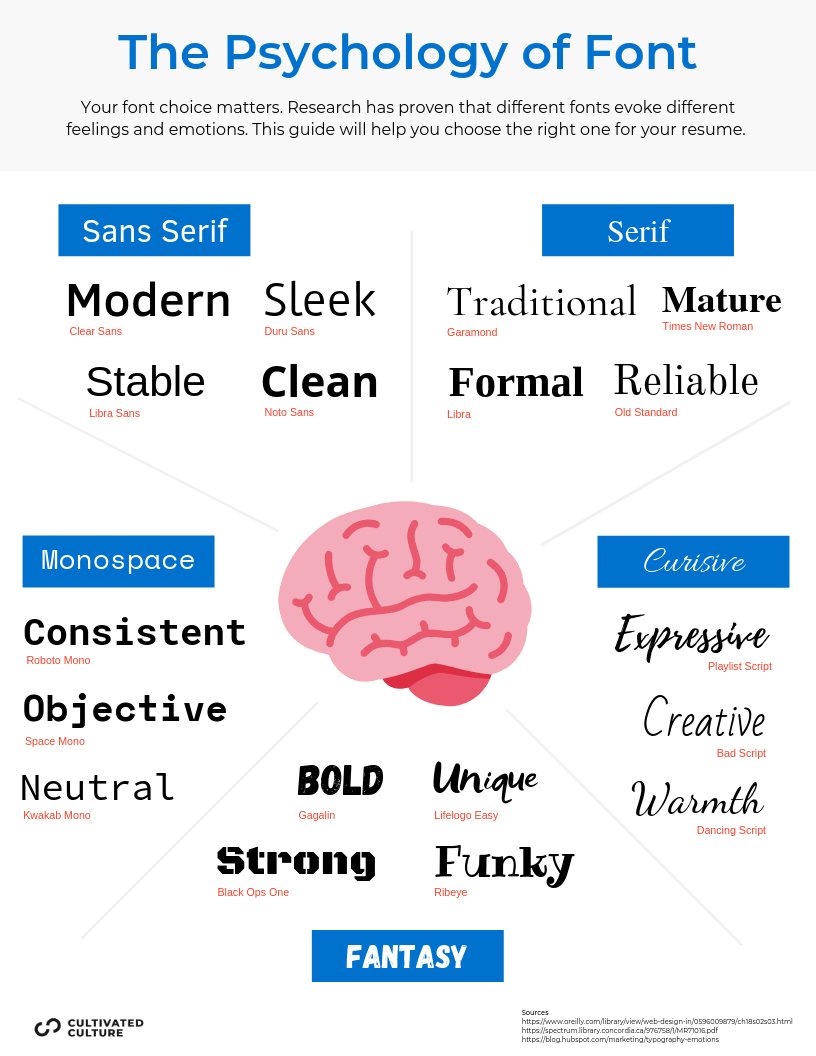
When it comes to the “best” font for your cover letter , the safest bet is to use something simple and easy to read. In my opinion, Sans Serif fits that bill best so choose from fonts like Avenir, Helvetica, or Open Sans.
Formatting Your Cover Letter With Your Resume
If you're writing a cover letter, I bet you're also thinking about how it will tie into your resume. Both of these documents tend to go hand-in-hand when applying for jobs and staying consistent in both is a great way to show off some organizational skills and attention to detail.
The best rule of thumb is to match the formatting you're using on both your resume and cover letter. That means you want to:
- Use the same color scheme (matching down to the specific hex code )
- Use the same font and sizing (if you use 12 point for headers and 10 point for paragraphs, stay consistent on both)
- Use the same header (you can just copy and paste it from your resume to your cover letter and vice versa!)
- Use the same margins and spacing (if you went with 0.5″ on one, do it for both!)
If you pick an awesome cover letter template (like the one I linked below) and you match the formatting with your resume, your materials are going to look awesome and give you a great first impression.
Finally, when all that work pays off and you make it past the final round, make sure your resume references sheet matches the templates you choose here.
How To Upload & Submit Your Cover Letter (Choosing The Right File Type)
So you're finally ready to upload your cover letter and hit “submit” on that online app. Not so fast!
When you upload your cover letter, the application will accept certain file types — and they're not created equal. Usually the online portals will accept Word (.doc and .dox), PDFs, TXT files, and more.
So which one should you choose?
First, you should look to see if there are any instructions on the page. If the application tells you to use a specific format or file type, you should use that format or file type.
This is important because different applicant tracking systems can read applications in different ways. Most modern applicant tracking systems can read PDFs , but not every company uses a modern ATS system. So if the application specifically asks for a Word doc, you should use a Word doc.
If there are no instructions, Word is usually your safest bet but you should be fine using a PDF in most cases as well (unless the site specifically states otherwise).
Cover Letter Templates & Examples
At this point you should have a solid understanding of the science behind writing a killer cover letter. You should also have a good handle on what mistakes to avoid so your cover letter makes an awesome first impression.
Now we need to apply all of that to ink on paper! In order to make that easy for you, I'm including a copy of the cover letter templates that I used to land an interview at Google so you can see exactly how I wrote it.
Steal The Exact Cover Letter I Used At Google, Microsoft, & Twitter (For Free)!
Context For The Free Cover Letter Template
Before we dive into the exact cover letter template, I want to give you some context so you can better understand the content of the letter.
I was applying for a Digital Advertising Sales Account Manager at Google's offices in New York. I started by doing some research on LinkedIn to find who I believed to be the hiring manager (her name was Emmy).
I knew that my non-traditional background was a big red flag for most employers so my goal was to proactively address it in my cover letter by calling it out, talking through what I'd done to build the right skills, and highlight the results I'd achieved from those efforts.
Finally, I had spoken to several Google employees who all told me that “Googliness” (cultural fit) was a huge factor in the company's hiring decisions. If I wanted to have a chance, I needed a compelling narrative around why I wanted to work for them and why I was a good fit.
With all of that in mind, here's the cover letter I wrote:
Austin's Cover Letter Template Dear Emmy Anlyan, I grew up with Google. When I was seven years old, I used to sneak down to my Dad’s office at five in the morning to play video games. I still remember opening the browser and seeing the bright, multi-colored letters above the search box for the first time. I’ve always been interested in the tech space and, while my background has mainly been in the sciences, I’m ready to dive head first into the digital world. I believe I would be a great fit for the Digital Advertising Sales Account Manager role because I have a deep understanding of the businesses that partner with Google and how they define success. You might notice that there isn’t much “traditional” digital experience on my resume. That is because, coming from a scientific background, I needed to take a different path. In an effort to gain experience, I created my own agency called OpenWater Analytics. I specialized in using AdWords to generate real estate leads for private communities. I managed the entire sales process from cold outreach, to closing, to servicing the accounts on your platform. Most recently, I helped a community in South Carolina sell every listing on their site (about 15 homes) in less than 6 months. Our cost per lead was half of the competition and we did it all for less than the commission the realtor would have made on a single house (including ad spend). Understanding how these small businesses worked was critical to my success, and I believe those skills will help Google acquire happier, more successful customers who are inclined to spend. In addition, I’ve done some research on your team and have come to understand that your largest challenge is around successfully growing smaller accounts at scale. Based on my experience, I’ve put together a few suggestions below this letter – I’m happy to chat through them in more detail if you’d like. I wanted to close with a quick story about Google that solidified my choice to apply. My referral, [Name of Referral] , works in the education vertical. He services the southeast and many of his accounts are rural. On his last visit down there, in a South Carolina town of 1,500 with no wifi, a teacher asked him if Google could help bring the internet to them. When [Name of Referral] made it back to the office, he emailed Astro Teller asking about the potential for Project Loon to help bring this town in the 21st century. To his surprise, Astro wrote him back within the week mentioning that he’d look into it. While things didn’t pan out, the fact that director of Google’s moonshot project division wrote back an employee about an elementary school in South Carolina blew me away. That is the kind of work I want to be doing. Thank you for taking the time to read my note, I’m incredibly excited to have the opportunity to be considered for this position. Best, Austin
Another Cover Letter Example From A Real Client
It's always helpful to see things from a few different angles so I wanted to include an example of the cover letter one of my clients created using the same template.
She was a high school Spanish teacher aiming to break into marketing. The company in question was an online education company that provides amazing video content for teachers to use in the classroom.
She had been leveraging the company's videos in her “Culture Corner” that she used to start every class. She decided to use that as the basis for her opening.
She starts off with a fantastic hook, “Grapes & [Company Name].”
If you're seeing that as a hiring manager, you're probably thinking “huh??” and you are most definitely be reading more.
Then she dives right into the story about one of her favorite memories that included one of the company's videos. Genius!
Next, she goes on to address her non-traditional background and shifts the conversation towards her value by illustrating her knowledge of the company and linking to a value validation project she put together.
This cover letter example is a 10/10, check out the full thing here:
My Client's Cover Letter Example Dear [Hiring Manager] , Grapes and [Company Name] . Both are amazing in their own right, but I never thought I’d get so much joy from combining them. I currently teach high school Spanish and I set aside time each class to teach my students about Spanish culture. A few weeks ago, we watched the “Virtual Viewing Party: Holidays from Around The World” video by [Company Name] . My students particularly loved the segment on the Spanish New Year’s 12 grapes tradition. This got my students interested in other aspects of Spanish culture. Now, we’re working on a culture project where students research a Spanish tradition and create a 3D representation of it. I’ve never seen so much energy in my classroom. Amazing stories like these are why I want to work for [Company Name] . You may notice that my resume does not reflect “traditional” marketing experience. After completing my master’s, I worked as the marketing manager for the UNCC Department of Languages program. I created a strategic marketing plan to increase enrollment for the Master’s in Spanish program. At the end of the year, the program saw a 50% increase in student enrollment (the largest jump in four years). Soon after, I pursued teaching for a few years. In order to get more experienced in the marketing analytics space, I created my own online education website to teach Spanish to adult learners. After testing various digital marketing strategies, my first product launch resulted in a 10% sell through rate. In addition, I am Google Analytics Certified and have working knowledge of SQL. My marketing experience coupled with my education experience gives me a unique perspective on Discovery Education’s product. After analyzing the company through the lens of both a marketer and a user, I put together a report outlining step-by-step data backed strategies that can help Discovery Education: Drive 4.5X more qualified leads Enhance its user experience for both prospects and current customers Implement a digital marketing strategy that has helped companies increase revenue by 760%. Leverage Google Analytics Goal Paths to test these ideas Finally, I’d like to add that I had the pleasure of connecting with [Current Employee] , one of your product marketing managers. [Employee] spoke so passionately about the product, and told me about the new partnerships [Company Name] has with the NFL and MLB. His drive to get the product in front of thousands of students is extraordinary. I’m extremely excited for the opportunity to join such a passionate group of people, and help impact students on such a large scale. Thank you for taking the time to read my letter. I’m looking forward to next steps. Regards, [Client's Name]
Download A Copy Of Austin's Free Cover Letter Template
If you want a copy of that cover letter template with the header included and everything formatted, here's a link to a copy on my Google Drive.
After you click through the link, just hit File > Make A Copy > Organize to add it to your own Google Drive! You can also download it in a variety of formats.
What's Next? Writing A Resume That Actually Gets Results
Now that your cover letter is taken care of, check out our super comprehensive guide on writing a resume that actually gets results. After giving that a read, you can check out our slew of free resume tools, like our free resume builder that will allow you to create an ATS-friendly resume in just a few minutes:

If you still have questions or thoughts about writing an awesome cover letter, drop a comment below — I'm happy to reply with an answer!

- Connect on LinkedIn
- Follow me on Medium
- Follow me on Instagram
Austin Belcak
Austin is the founder of Cultivated Culture where he helps people land jobs without connections, without traditional experience, and without applying online. His strategies have been featured in Forbes, Business Insider, & Fast Company and has helped people just like you land jobs at Google, Facebook, Amazon, Apple, Microsoft, Twitter, & more.
19 thoughts on How To Write A Job-Winning Cover Letter [Free Templates & Examples]
Useful article for all job seekers who are likely to make cover letters to find a job but they should know that a poorly crafted cover letter may cost their dream job. Cover letter is important part of job application as it is first impression we’ll make with our prospective employer. Thanks for sharing these cover letter mistakes to avoid.
Thanks so much for reading and dropping a comment Mayur!
I was unaware before applying that cover letter plays this much of importance in interview so decided to create one for myself but didn’t had any idea about how and what should i include or which mistakes should i avoid while creating one but this article helped me while creating Cover Letter so thank you for the help.Cheers to this article.
You’re so welcome Ritesh! I’m super happy to hear it helped give you some direction 🙂
Thanks so much Rubel! Glad you liked it.
Great advice.
Thanks Steven!
Great guide! However, what would you recommend for job seekers who work in a field where there is no/little measurement of the impact of your work, e.g. software testing? Surely, no one expects us to make up figures for the impact that our work did. How exactly can one sell oneself here?
Sure Andeel – when you’re testing software, you still have measurable outcomes. You probably have a rate at which you identify issues, or you have a track record of approval while minimizing issues, etc. On top of that, it doesn’t necessarily need to be measurable. You could say something like “I Help Companies Deliver High Quality Software Products That Launch Without Issues” or something similar.
i hope it will help .. so as i can be able to change the situation i am currently in
I think it will, keep me posted on how things go!
Great Advice! I sure will avoid the mistakes listed and use your pointers for my next cover letter. Thank you.
I’m wishing you a ton of success out there Biko!
Really good post, loved it! i just have 1 question while building resume using your tool, we are able to create single page resume. Is there any chance to upgrade the tool so that we can add 2 page resume using Resybild.io
Yes! We are upgrading the tool the support multi-page resumes right now 🙂
Hello Austin could you write something, either for a cover letter or informational interview how to do so if you have a referral already?
Thanks Austin. It’s 2023, and this still gives me great insights on how to write compelling cover letter that works. Thanks
You got it Thompson! I know how frustrating cover letters can be, thanks so much for the kind words!
LEAVE A REPLY Cancel reply
You must be logged in to post a comment.
Most Popular Posts

YOU’VE SEEN AUSTIN IN

WHAT CAN I HELP WITH?

Welcome Back To Cultivated Culture!
Log into your Cultivated Culture account using one of the options below:
Forgot your password? Click here to reset.
Need a free acount? Click Here To Sign Up
By logging in, you agree to Cultivated Culture's Terms of Use , Privacy Policy , and agree to receive email updates.
One Free Account, Four Job-Winning Tools
Sign up for a free Cultivated Culture account and get access to all of our job search tools:
Your Bullet Score is:
Sign up for a free Cultivated Culture account to get the full breakdown of your bullet along with suggestions for improving it:
Sign Up To Save & Export Your Resume
Sign up to create, save, and export your resume and get access to our suite of job search tools!
Sign Up To Get More Free Email Searches
Create a free account to unlock more email searches and get access to all four of our job-winning tools:
Your Headline Score is:
Sign up for a free Cultivated Culture account to get the full breakdown of your headline along with suggestions for improving it:
Already have an acount? Click Here To Log In
We Just Need You To Verify Your Email.
We just emailed you a 6-digit code. Please check your email and enter it below.
Note: Your progress will not be saved until your email is verified. Closing this pop up or window might cause you to lose your progress.
Invalid Code
Choose one of the options below to get the verification code we sent you!
We'll need you to verify your email address before you're able to unlock free scans.
We'll need you to verify your email address before you're able to unlock free templates, saves, and exports.
We'll need you to verify your email address before you're able to unlock free email searches.
We sent a verification code to your email, all you have to do is paste that code here and submit to get full access!
Looks Like You Still Need To Verify Your Email Address!
Whoops! Looks like you still haven't verified your email address. We'll need you to do that before granting free, unlimited access to our tools.
If you can't find the original verification email, click the link below and we'll send a new one:
Sent! Please check your email.
Oops you've hit your credit limit..
Looks like you've used all 10 of your free credits for the month. Your credit limit will refresh in days. You can learn more about your credit limit here.
Want to stop worrying about credits?
Sign up for our Unlimited plan to get instance unlimited access to all of our jon search tools for one low price. Click below to learn more:
Go Unlimited!
Change plan.
Upgrade your plan to get unlimited access to all 5 of our offer-winning job search tools and 200 email searches / week:
Go Unlimited (& Save 10%)!
Upgrade to get unlimited access to our resume tools, 200 email searches / week, and 10% off our regular pricing thanks to your friend :
Your Unlimited plan comes with...
Unlimited access to all 5 of our resume tools
200 Mailscoop searches per week
No obligations - cancel any time
By clicking "Upgrade My Plan," you agree to Cultivated Culture's Terms of Service and Privacy Policy
By clicking "Change Plan," you agree to Cultivated Culture's Terms of Service and Privacy Policy
Confirm Your Plan Change
Here is a summary of your plan change:
Current Plan:
Please note the following for plan changes:
Your new plan and rebill date will be effective immediately
The number above depict retail plan pricing, any adjustments or credits will be available in the Invoices section of your Billing tab
If you're moving to a lower cost plan, the difference will be credited to your account and applied towards your next payment
By clicking "Confirm Plan Change," you agree to Cultivated Culture's Terms of Service and Privacy Policy
Unlimited Plan Upgrade
Change payment method.
Promo code has been applied to your purchase!
Note: This is a monthly subscription, your card will be automatically charged every month until you cancel your plan.
Terms of Use | Privacy Policy
(C) 2024 Cultivated Culture
Note: You will not be charged for updating your credit card using this form. After your new card is added, you will be billed on the date of your next billing cycle.
Upgrade Complete!
You are officially a
Unlimited Member
Invoice Details
Paid Today:
Start Date:
Subscription:
Next Bill Date (Est.):
Note: This receipt and future invoices will be available in the Billing Tab of your Account Dashboard .
Do You Want To Secure Your Account?
Increase your account security with one of our multi-factor authentication options:
Choose An Authentication Method
Awesome! Let's make your account more secure.
Choose your preferred authentication method:
Text Message Authentication
Enter the phone number that you want to use to set up text-based authentication for your account:
Text Message Verification Code Sent!
Please check your phone for verification code and enter below:
Email Verification Code Sent!
Please check your email for verification code and enter below:
No problem, we'll skip this for now. Do you want us to remind you to secure your account?

IMAGES
VIDEO
COMMENTS
Chapter 2: Cover letter tips and hacks. The framework from our cover letter guide gives you a pretty strong foundation for writing a decent cover letter. Still, there are several tips you can ...
Course details. Cover letters matter. When done right, they spell out clearly who you are, what you have to offer, and—most importantly—why your skills, experience, and interests make you the ...
In her class on Writing a Cover Letter, Career Strategist and "professional résumé writer" Jenny Foss calls cover letters a chance to push you from the "eh, maybe" stack of candidates ...
The Strategy. As a job seeker, you need to adopt the mentality that you are marketing yourself, your skills, and your candidacy. You need to get out of the mindset that you are entitled to a job ...
Cover letter paragraph 3: Show your knowledge. This is where you can demonstrate the research that you did before applying. Show that you know what sector they operate in what they do and why you ...
Here are some expert tips: Start the cover letter in a way that grabs the reader's attention. For example, if someone influential has referred you, lead with that. Include your most relevant ...
Join Jenny Foss for an in-depth discussion in this video, How to write a cover letter, part of A Career Strategist's Guide to Getting a Job.
How to Write a Cover Letter That Sounds Like You (and Gets Noticed) by. Elainy Mata. May 10, 2022. EM. Elainy Mata is a Multimedia Producer at Harvard Business Review. ElainyMata.
Step 3: Address your cover letter to the hiring manager—preferably by name. The most traditional way to address a cover letter is to use the person's first and last name, including "Mr." or "Ms." (for example, "Dear Ms. Jane Smith" or just "Dear Ms. Smith").
Include a call to action. This is one way writing a LinkedIn cover letter aligns with the conventional wisdom found in many cover letter articles. Make sure to end your cover letter with a clear prompt for the person reading it to take the next step in the hiring process. Reiterate your enthusiasm and invite them to view any materials or ...
Middle paragraph (s) Closing paragraph. Letter ending and signature. Your cover letter should be one page long and use a simple, professional font, such as Arial or Helvetica, 10 to 12 points in size. Your letter should be left-aligned with single spacing and one-inch margins. Show Transcript.
Respectfully, Kind regards, Best regards, Yours truly, Then, make two spaces below the salutation, and type your full name. For some professional (but optional) flair, sign your cover letter either with a scan of your signature or by using software like DocuSign. 8. Check your cover letter's content and formatting.
Include the name of the person to whom you are writing as well as the company name and address just above the salutation. In the salutation, greet the hiring manager by name. If you don't know the name of the person, consider greeting the hiring department or the department with which you would be working if hired. 3.
start your cover letter. with your contact details at the top. These should be in your cover letter's header, separated neatly from the bulk of your text. Here, you want to include all the essential contact information, including: Full Name. Your first and last name should stand out at the top. Job Title.
Visually Match Your Resumé. The heading of your letter should correlate with your resumé, the font should be the same and the paper (if you're printing it) should also be the same. Along with your resume, your cover letter is part of a pair, and this pair should be visually consistent.
Avoid addressing the recipient with "Dear Sir or Madam," which is outdated and impersonal. It's always best to address them by their title and name. For example: Good cover letter greeting examples: "Dear hiring manager,". "Dear [XYZ Company] team,". "Dear Customer Acquisition Hiring Manager,". Weak cover letter greeting examples:
Here are 9 steps you can take to make sure you're headed in the right direction: Step 1. Do your research. Before writing your cover letter, thoroughly read the job description and the requirements for the job. Melanie Denny, award-winning resume expert, likens the job description to your cover letter cheat sheet.
Quick Answer. A cover letter is excellent, depending on how well you write it. First, ensure you dig into the company and position you seek, then use those details to your advantage. Create a catchy headline that captures the reader, use the appropriate salutation, write a killer introduction, explain why you fit for the job and why the company ...
This guide will help you avoid any mistakes and write a strong cover letter that will catch the recruiter's attention. We also include cover letter examples. Generally speaking, you want to make your cover letter: easy to read for the recruiter; well-structured; typo-free; max 4 paragraphs/1 page long;
Here are five basic steps to create the perfect cover letter: 1. Use a consistent structure. Visual consistency is essential for a cover letter. Your letter should fit onto one page and use the same font and font size throughout the body. Use a simple, easy-to-read font like Arial, Helvetica or Calibri. Your font size should be between 10 and ...
Here are some tips for writing a LinkedIn cover letter: Keep it short and sweet. Just like with any other type of cover letter, you don't want to ramble on or include unnecessary information. Be concise and to the point. Use keywords. Take a look at the job listing and include some of the same keywords in your cover letter.
Then try to match them in the letter in a way that will appeal to the employer's self-interest. Arrange the points in a logical sequence; organize each paragraph around a main point. Basic fonts like Arial, Calibri, Georgia, Verdana, and Times New Roman work well. A font size of 10 or 12 points is easy to read.
3. Include the employer's contact information. If you know the hiring manager's name and the company's name, address and phone number, leave space to include it. Otherwise, this is one part of your outline that you may leave out. 4. Date your cover letter. Your cover letter outline should include room for the date.
To start your cover letter, introduce yourself. This means including your full name, your specific interest in the position and the reasons you've chosen to apply. If you got a referral to the job from another party, ensure to mention this in the first paragraph. 2. Mention your skills and qualifications.
What to include in a business cover letter When writing your business cover letter, there are 5 key aspects you need to keep in mind. Address the recipient professionally Start with a professional salutation, addressing the recipient formally. Always use the recipient's name, if possible. Express your enthusiasm for the role
Hospitalist cover letter sample To help you learn more about cover letters, here is a sample cover letter for a hospitalist: Chuck Ferris Chicago, Illinois 304-555-0192 [email protected] March 14, 2024 Mr. Bob Richardson Wavewood Hospital Dear Mr. Richardson, I am writing to express my interest in the hospitalist position at Wavewood Hospital, as advertised on your website.
Cover letter sample for a team member To help you understand cover letters better, here is a sample cover letter for a team member: Chuck Ferris Vancouver, BC 613-555-0123 [email protected] March 20, 2024 Mr. Bob Richardson Wavewood Teams Dear Mr. Richardson, I am writing to apply for the team member position as advertised on your website. As a dedicated professional with over five years ...